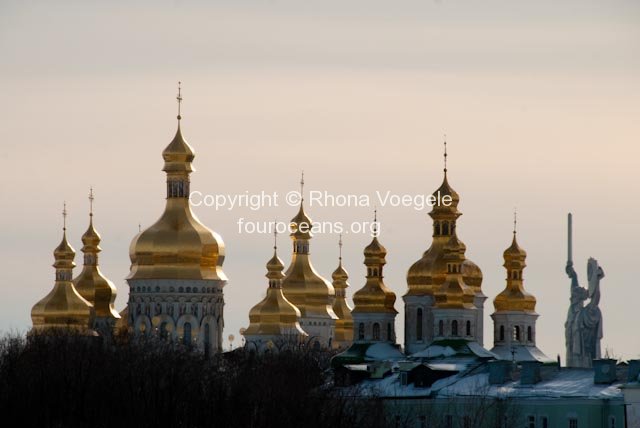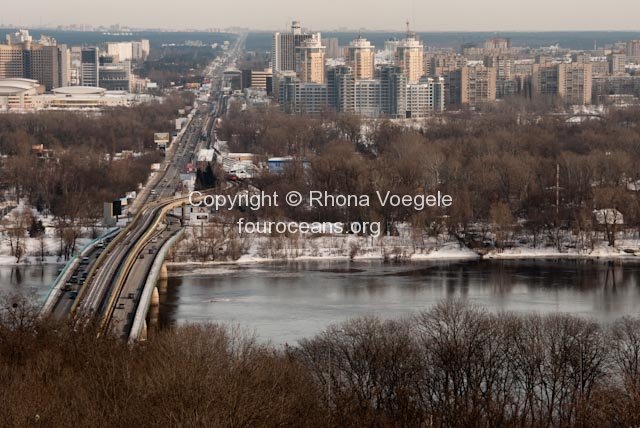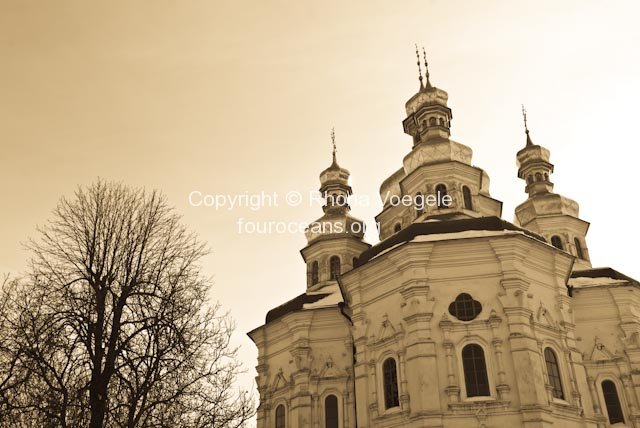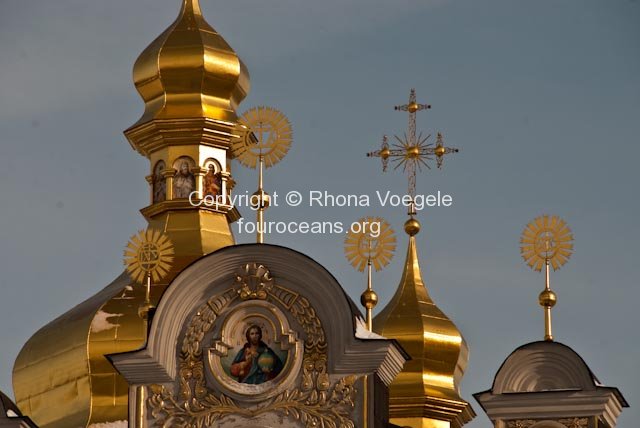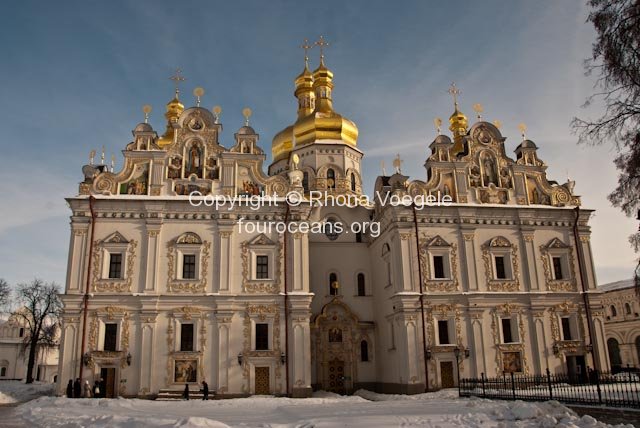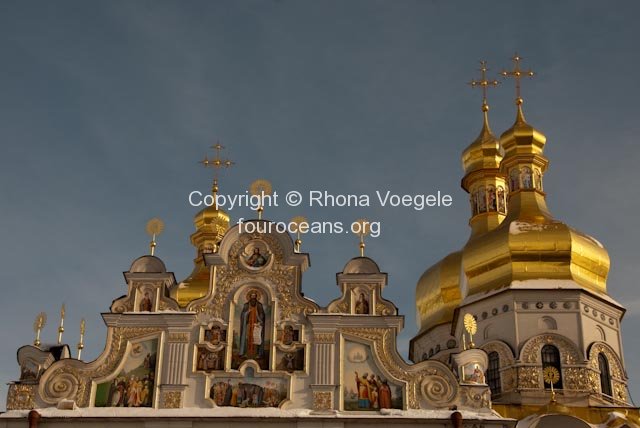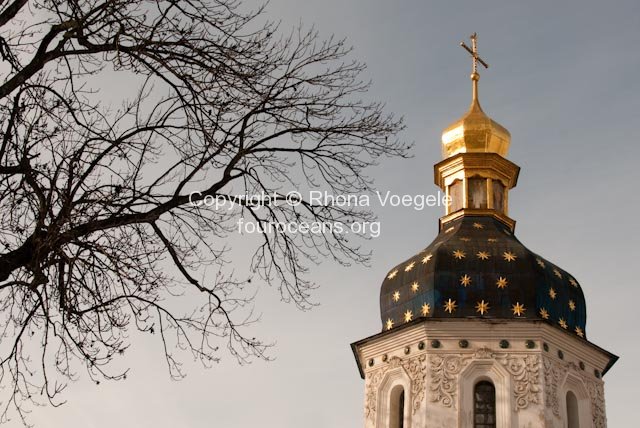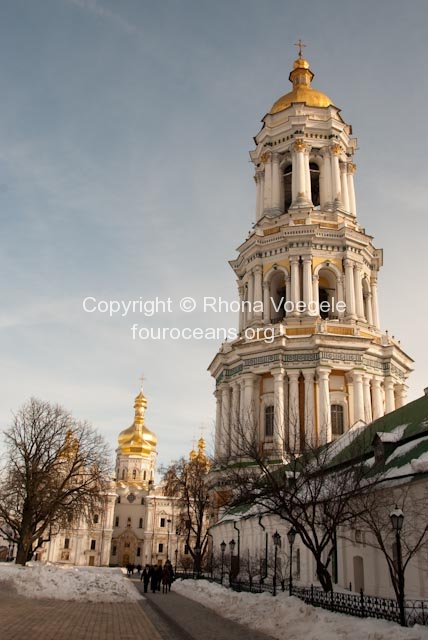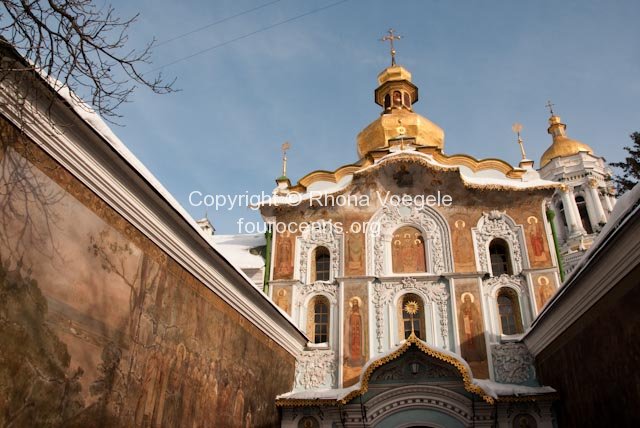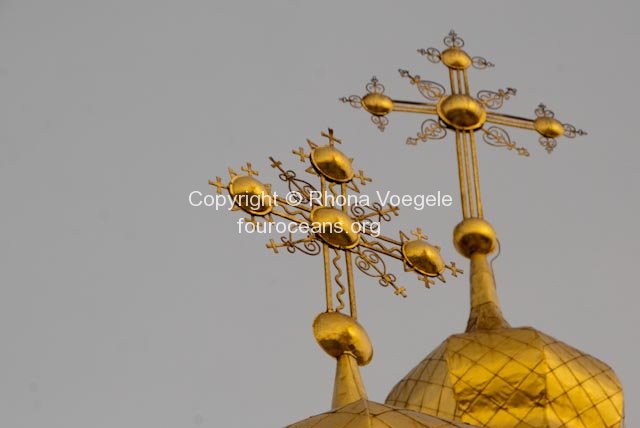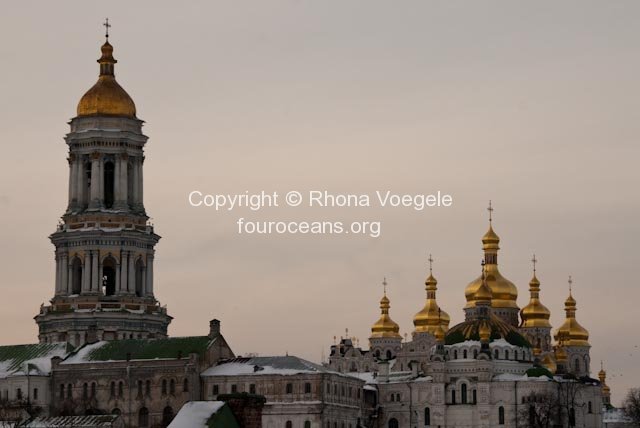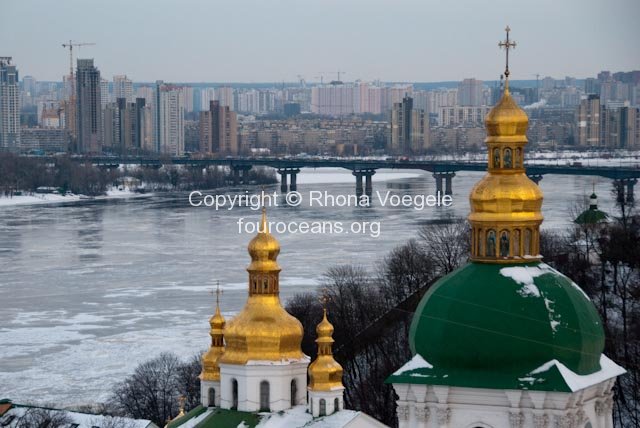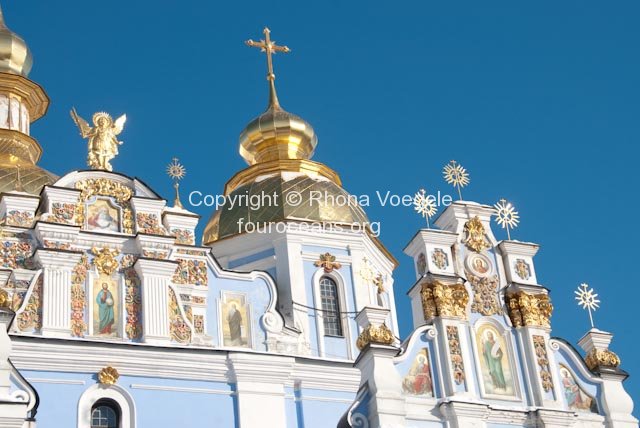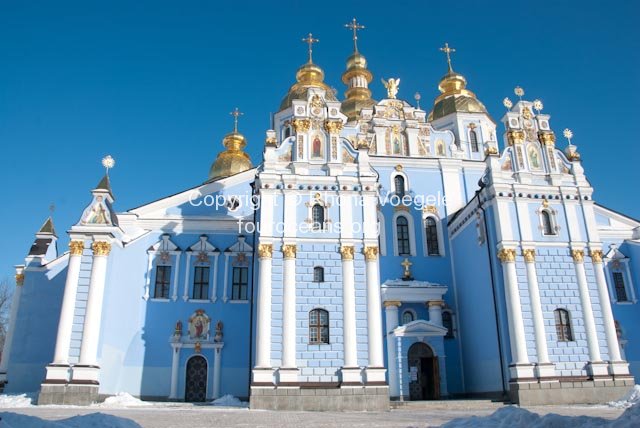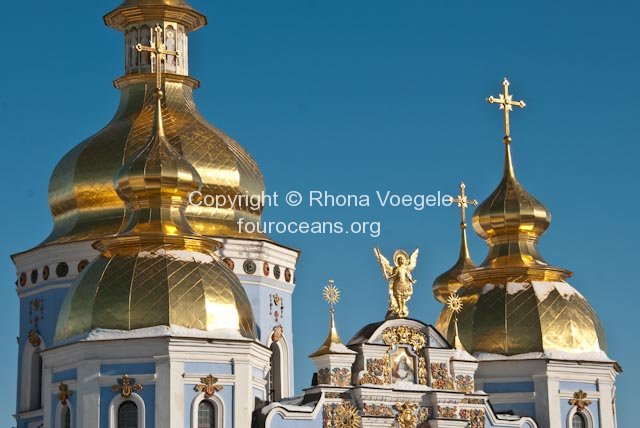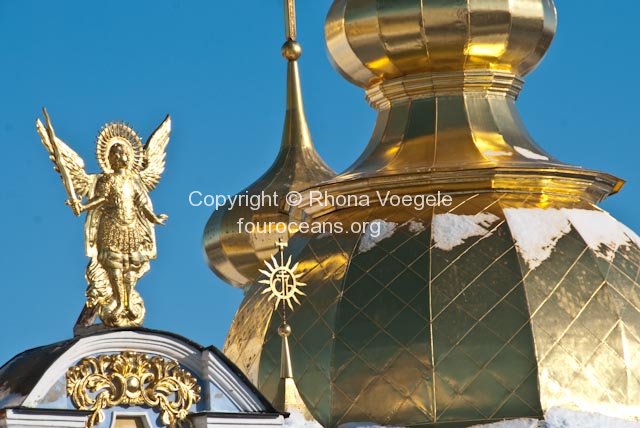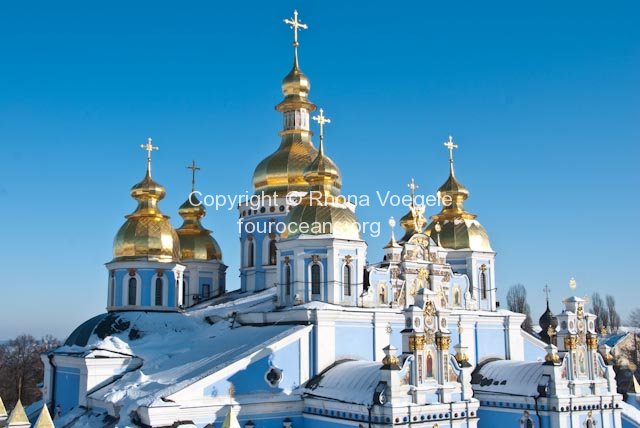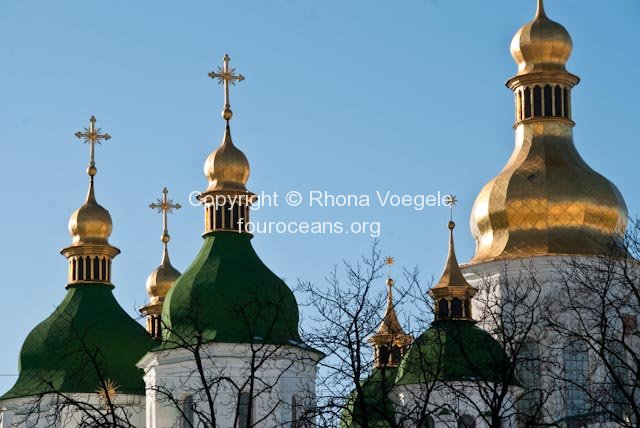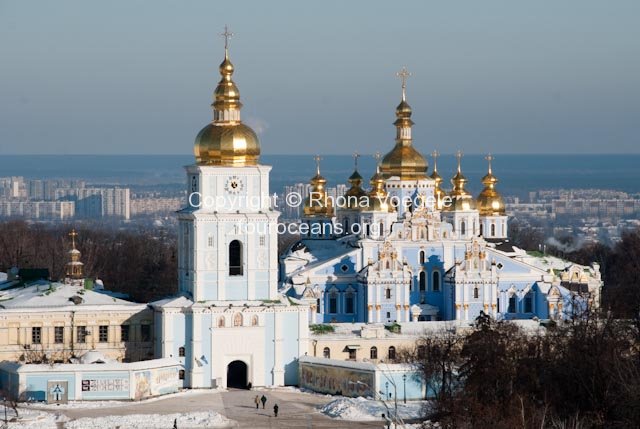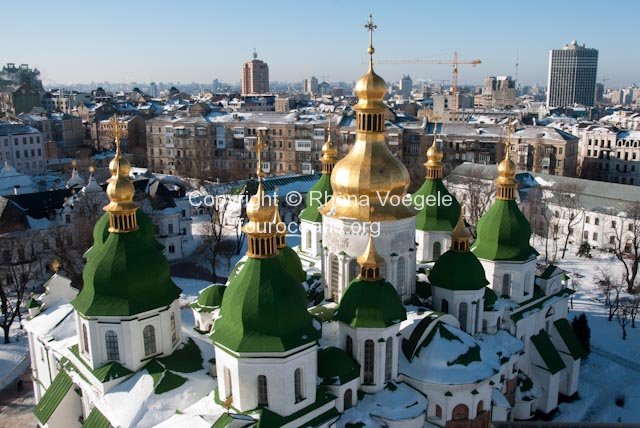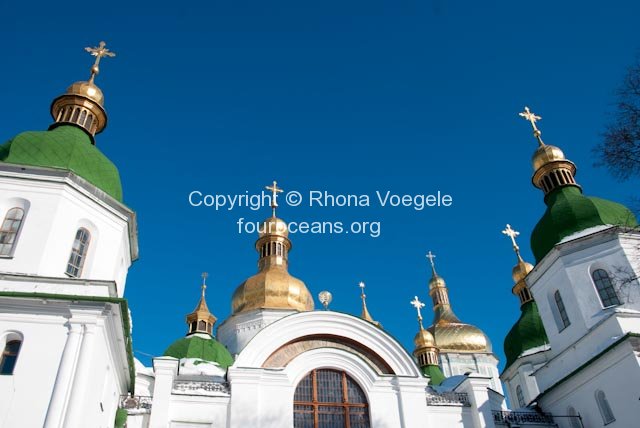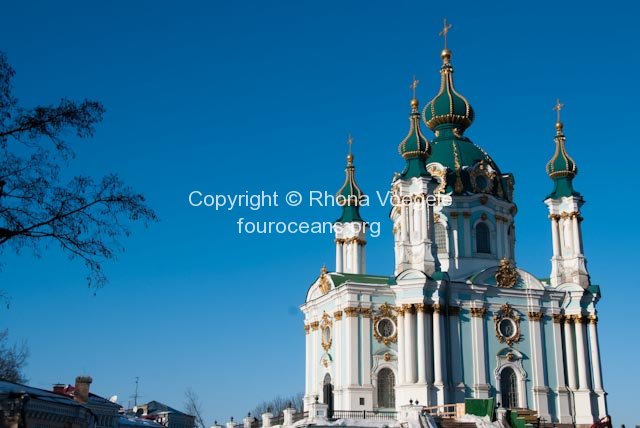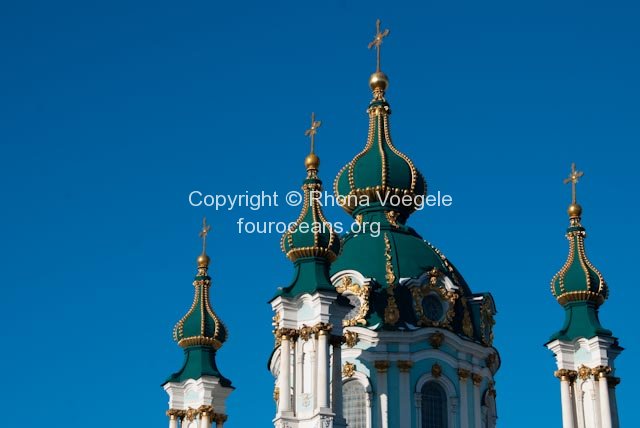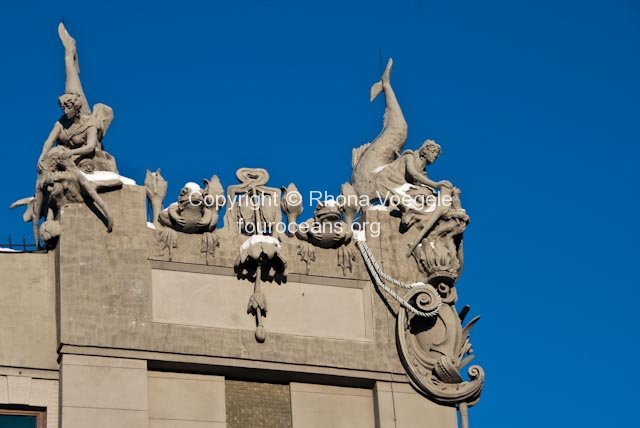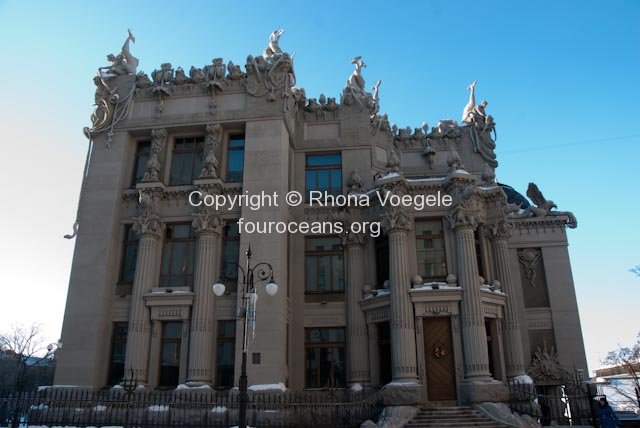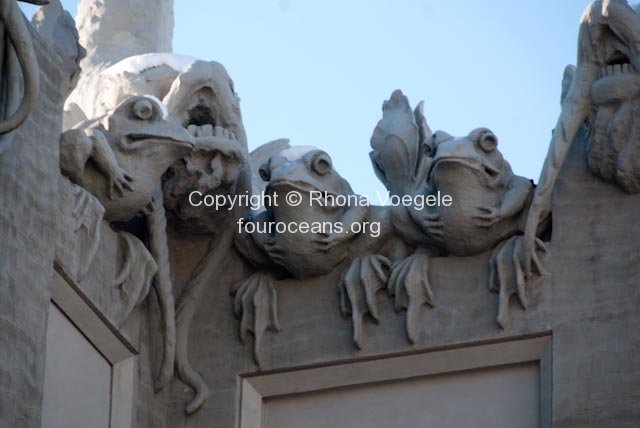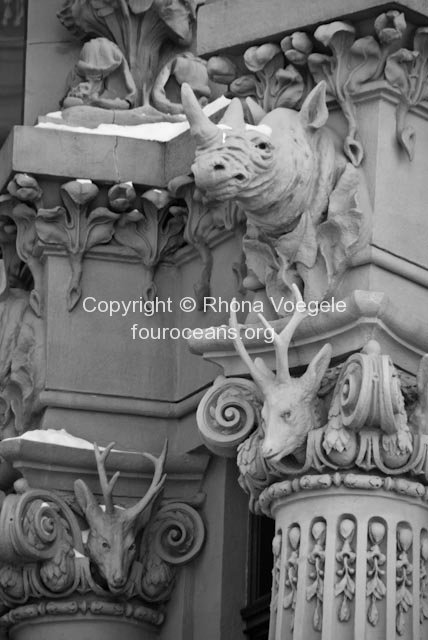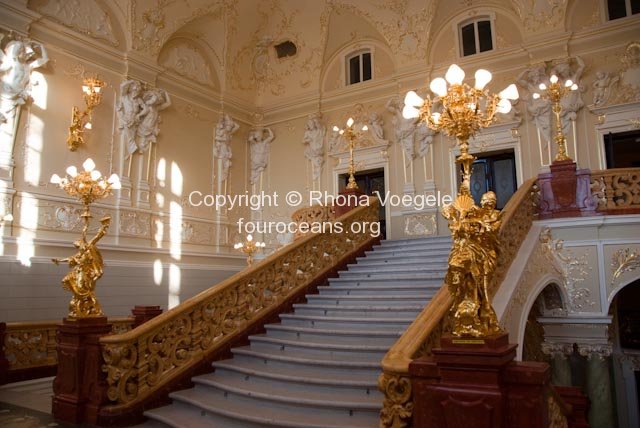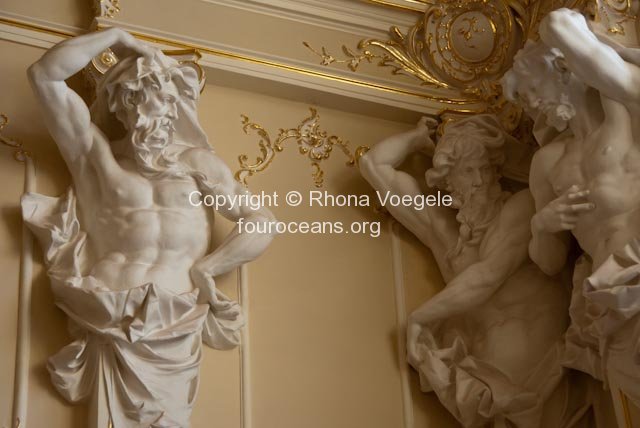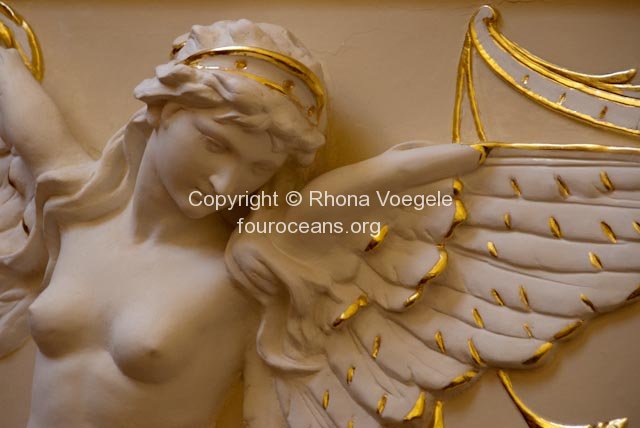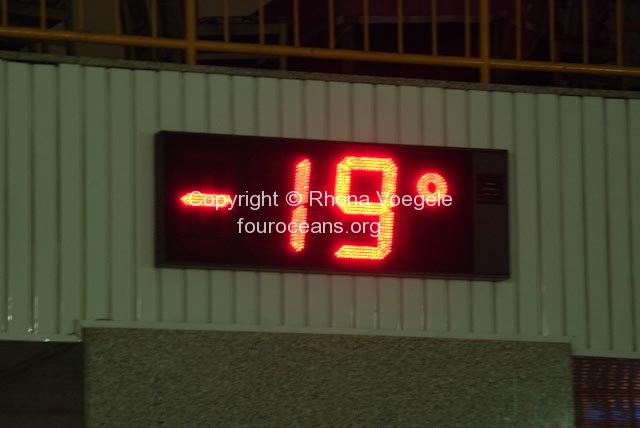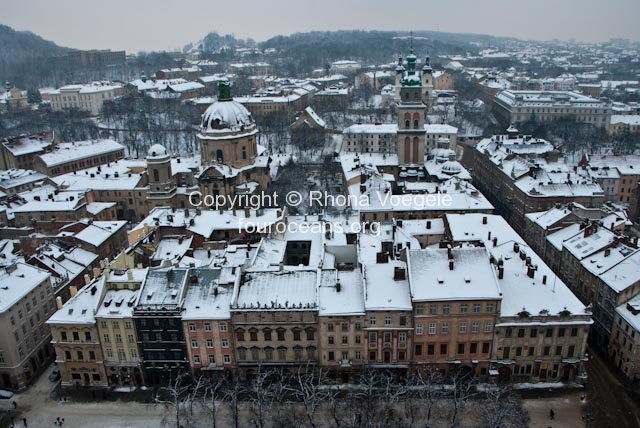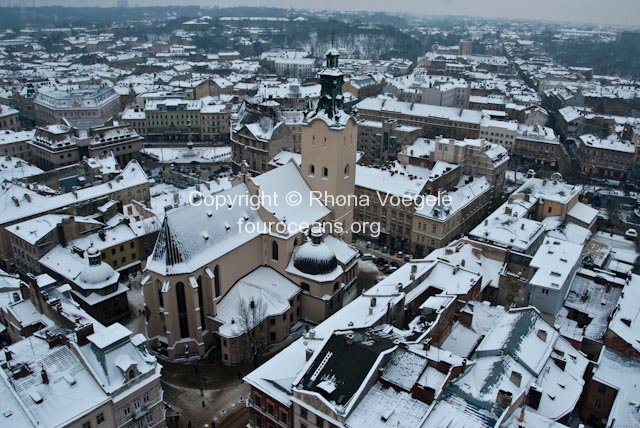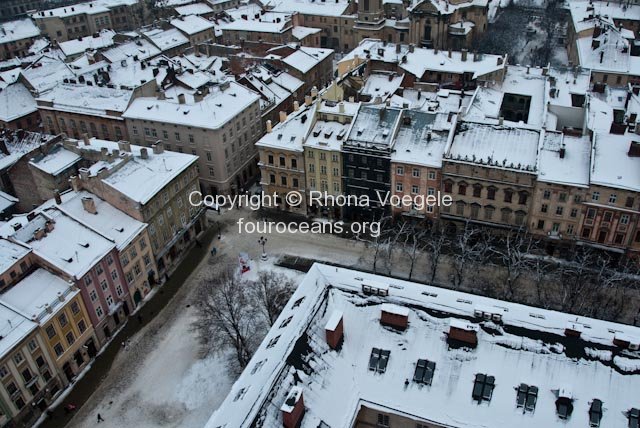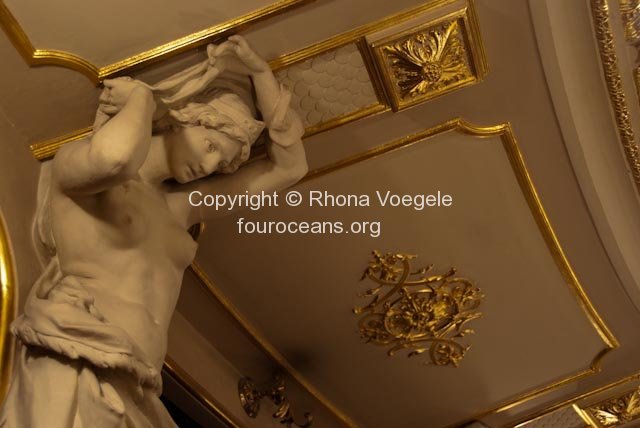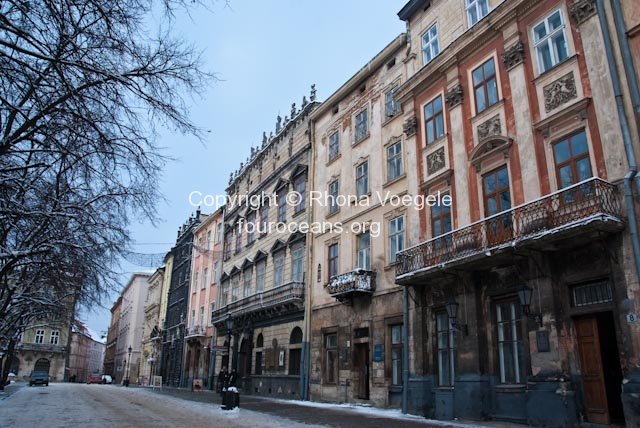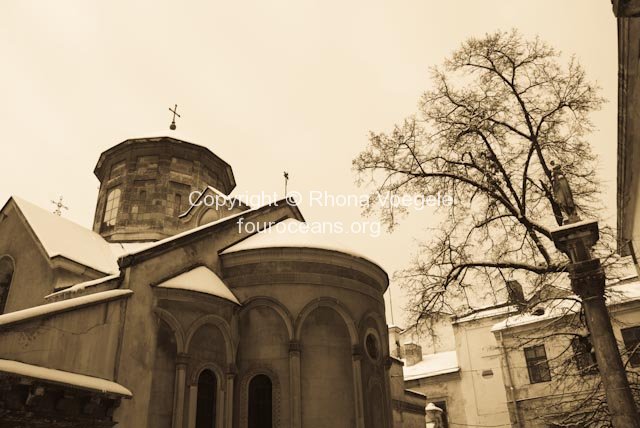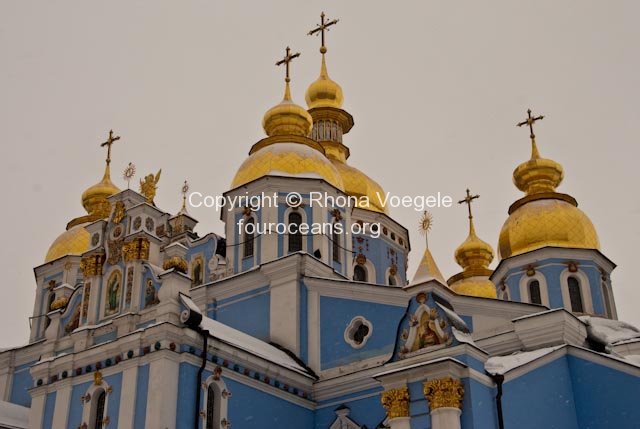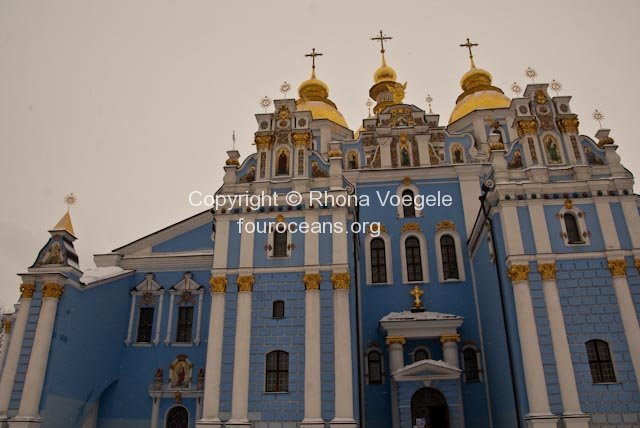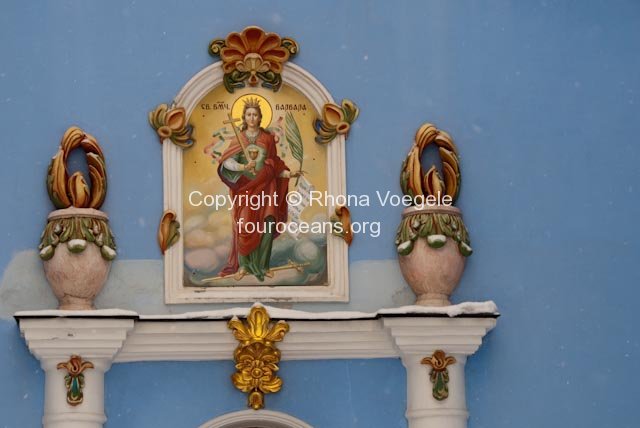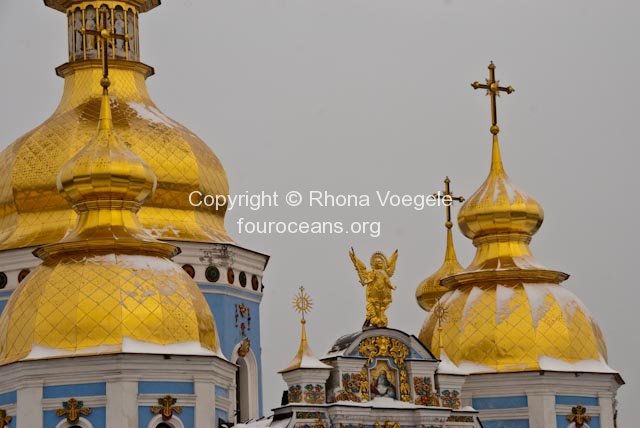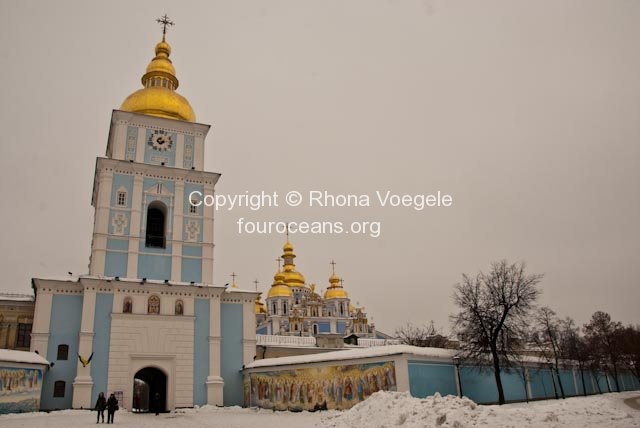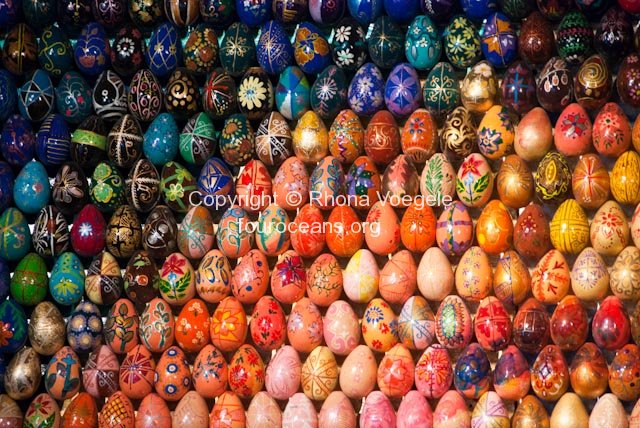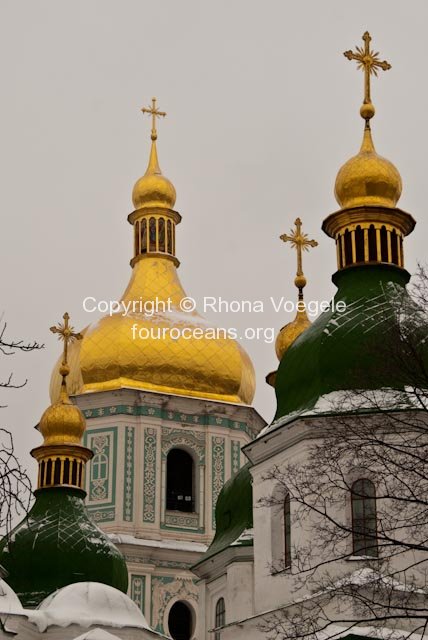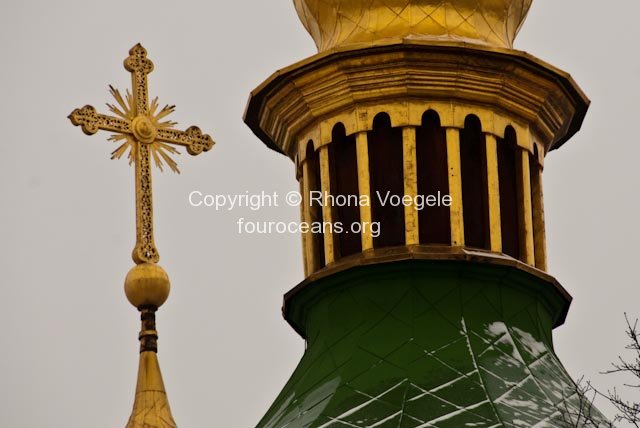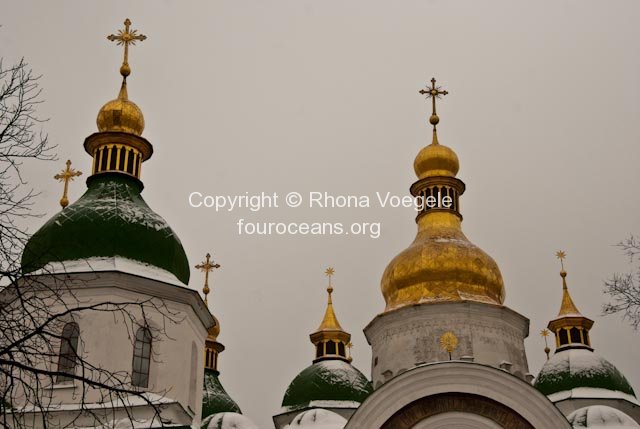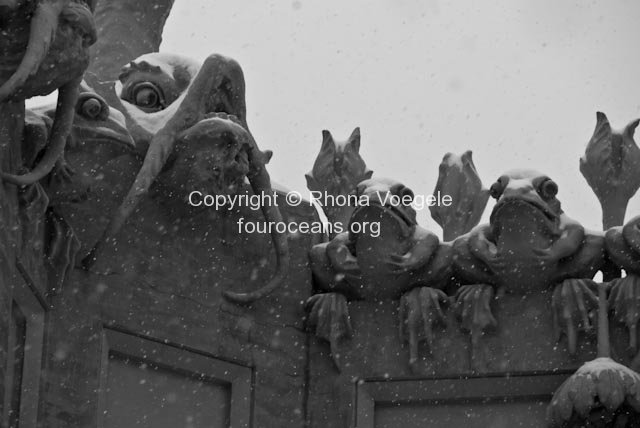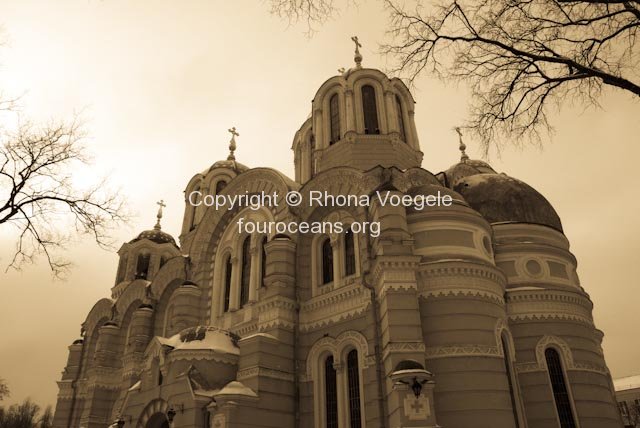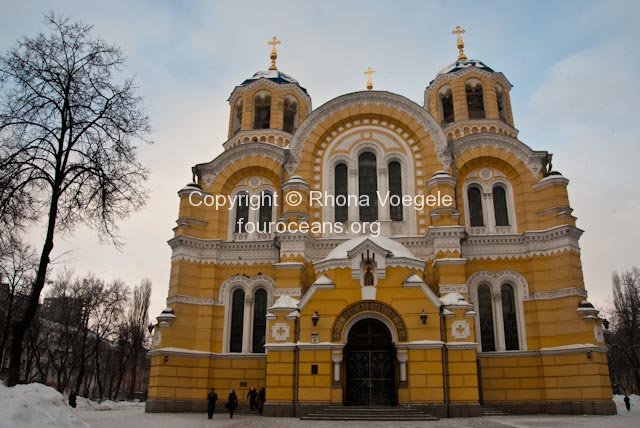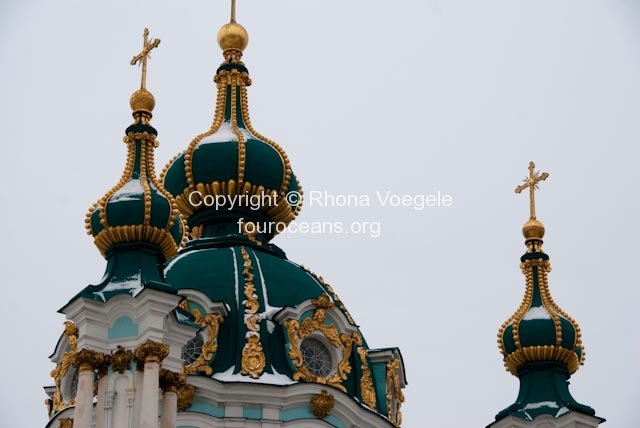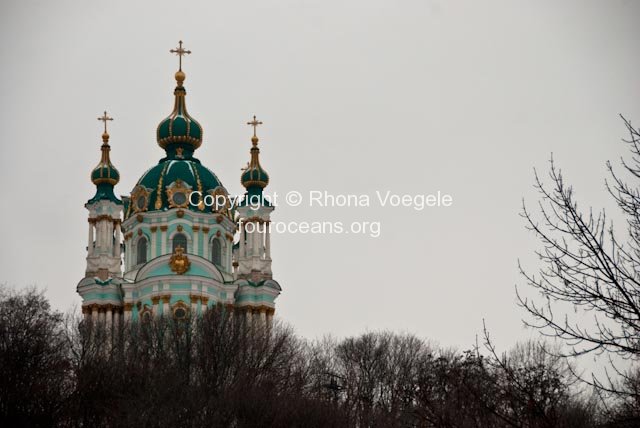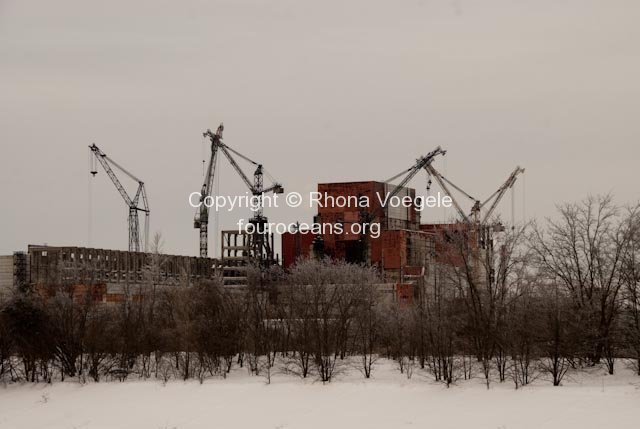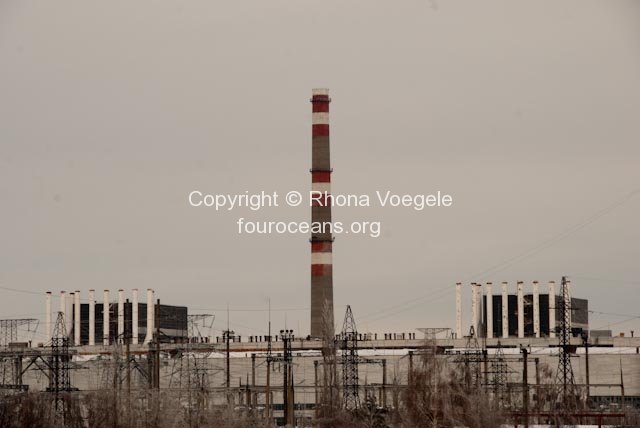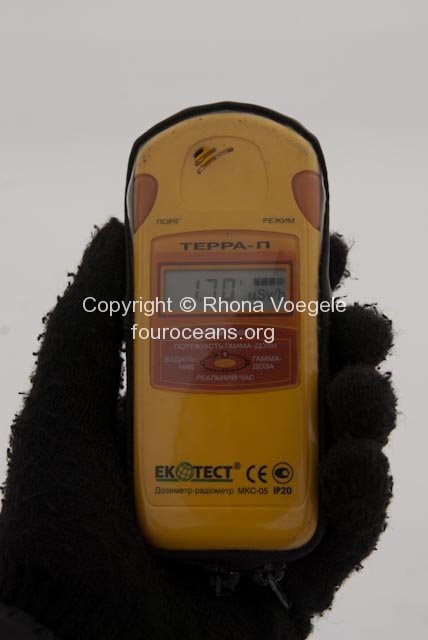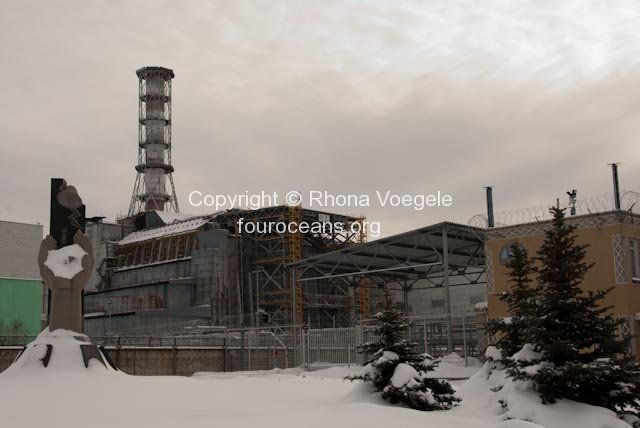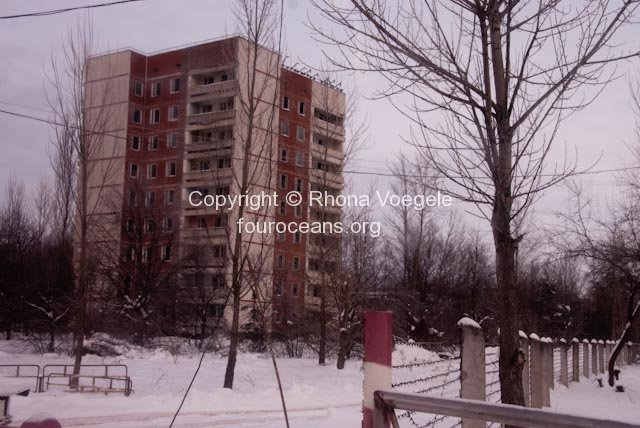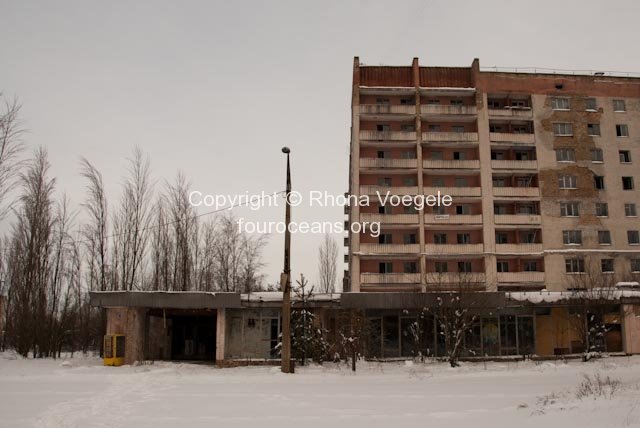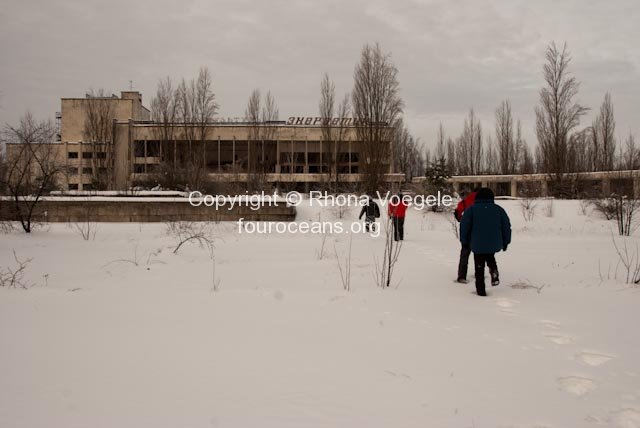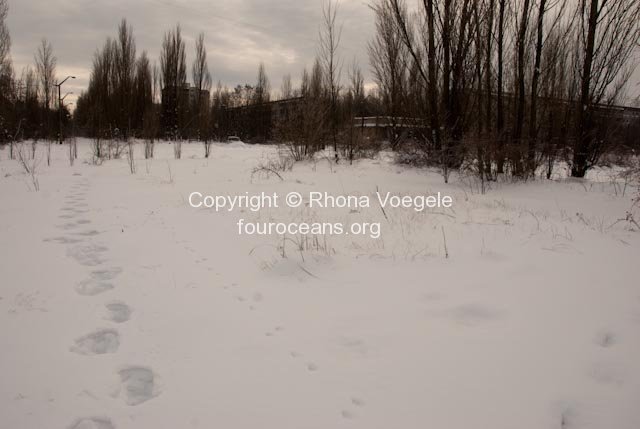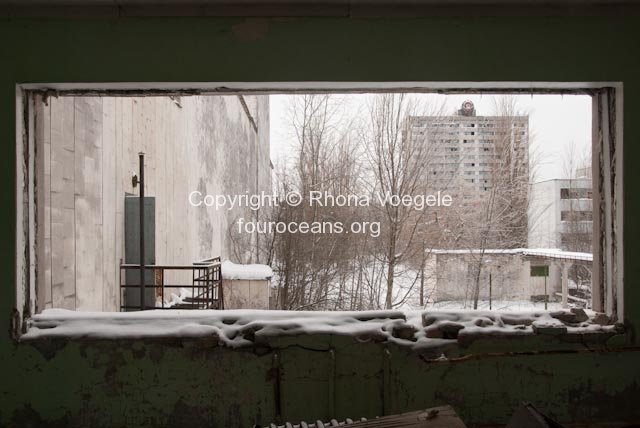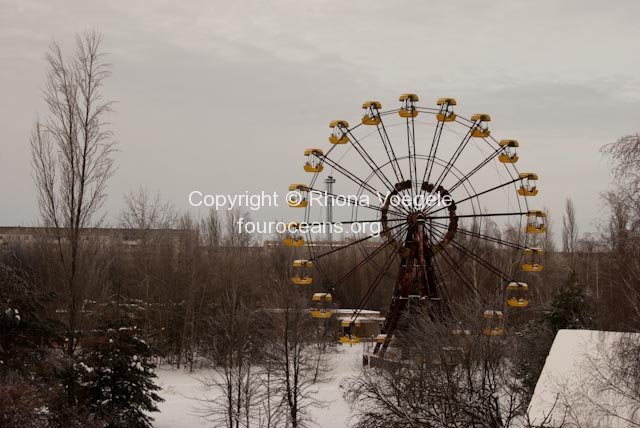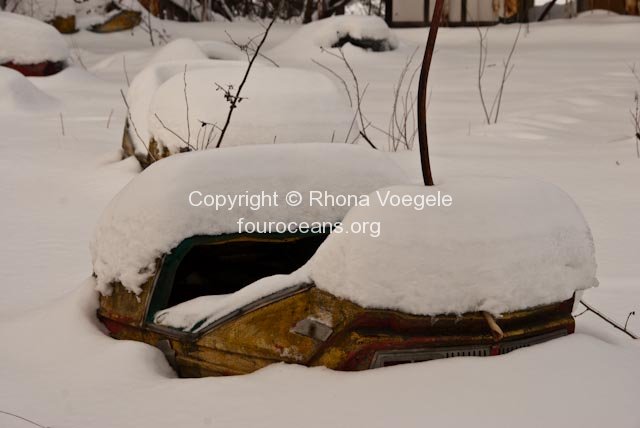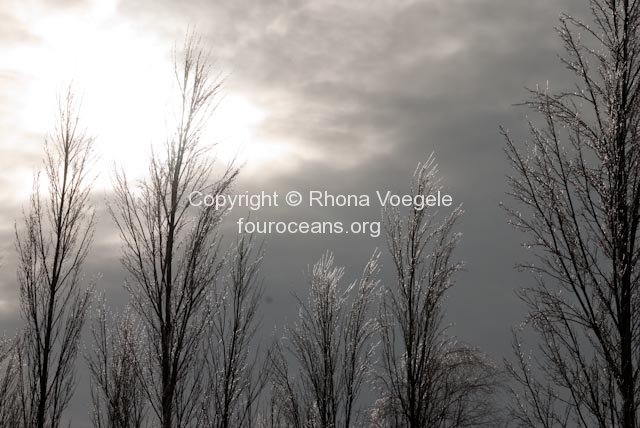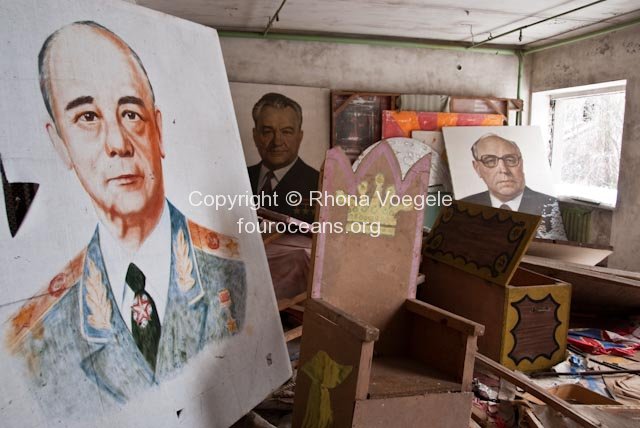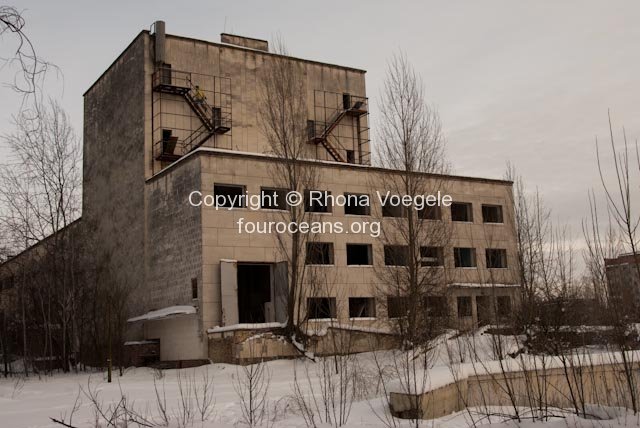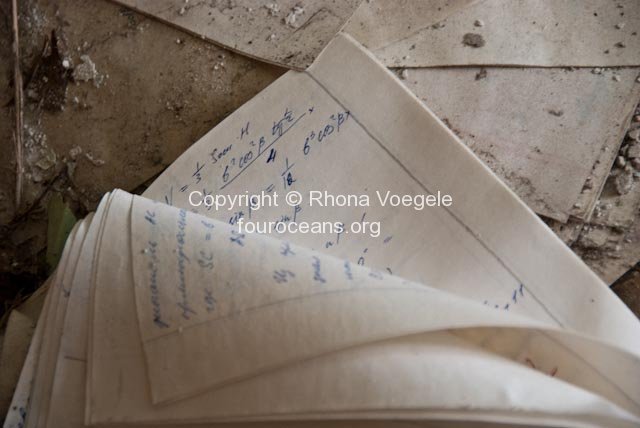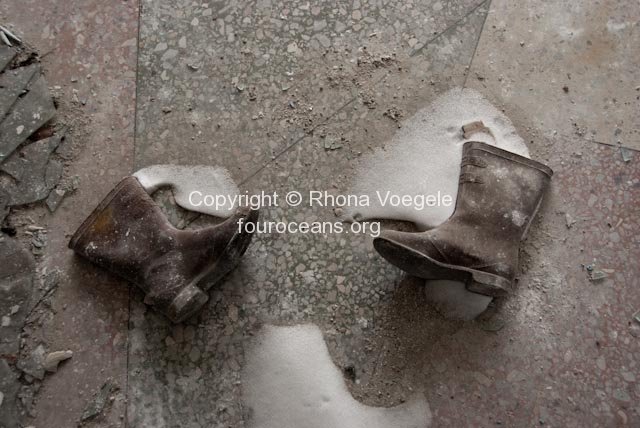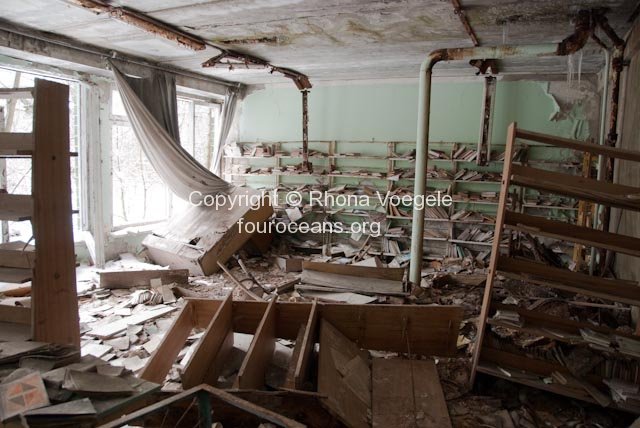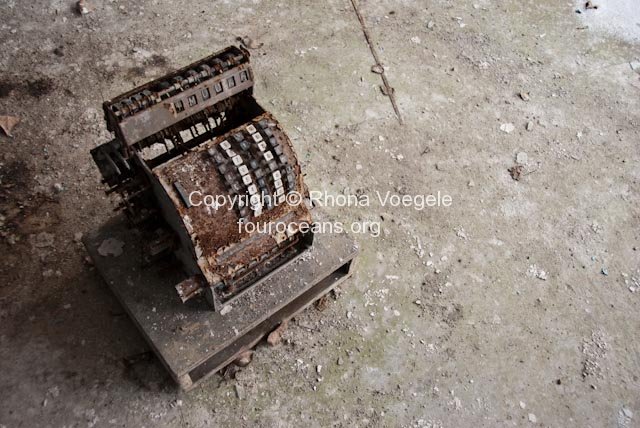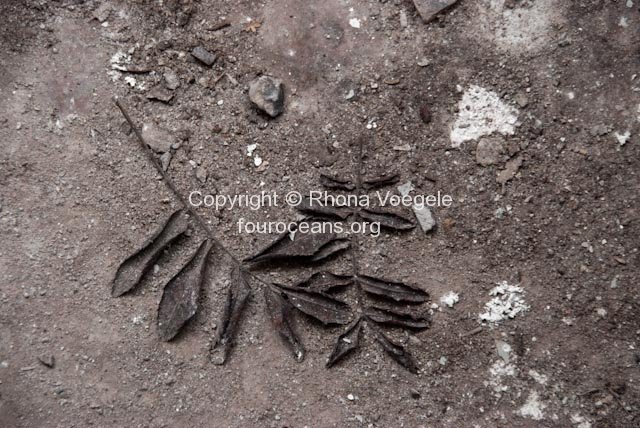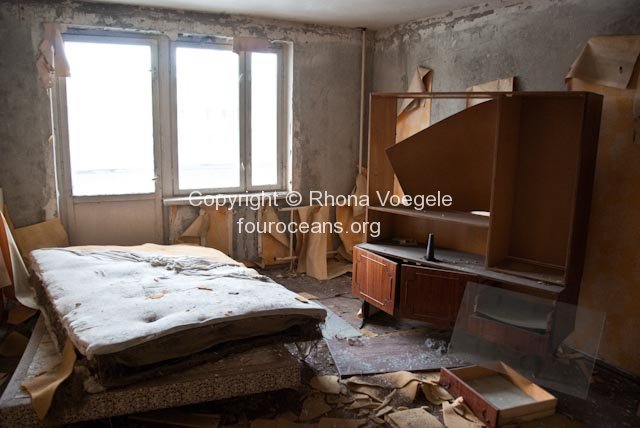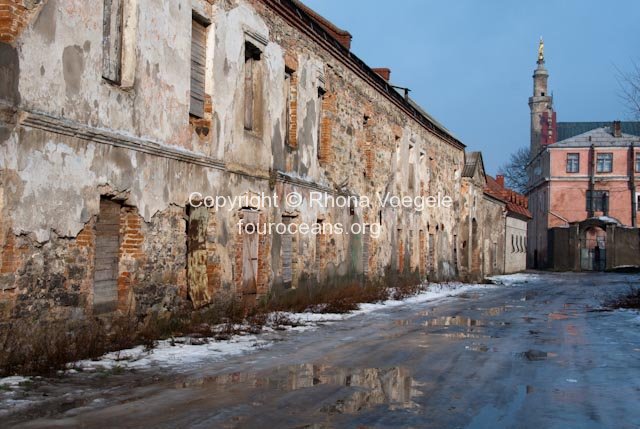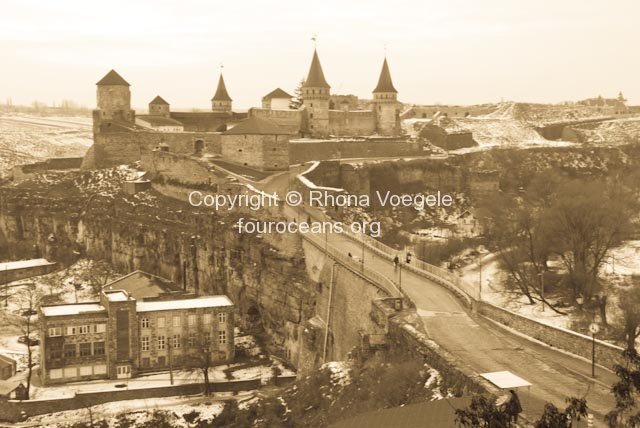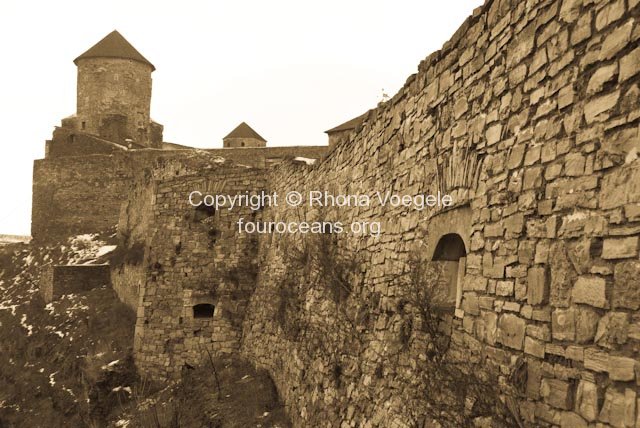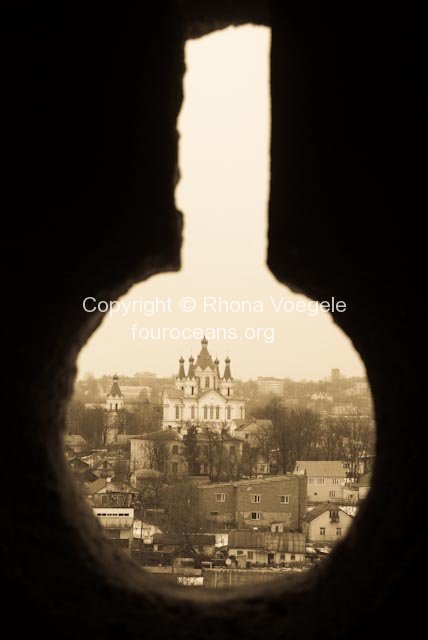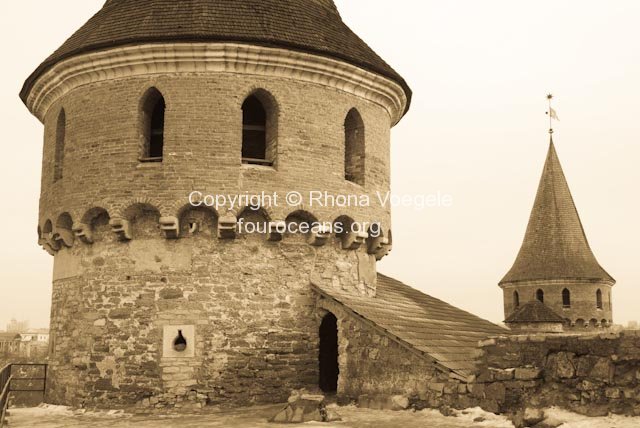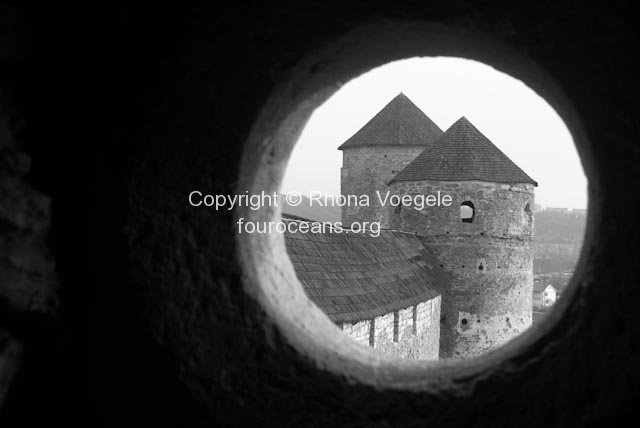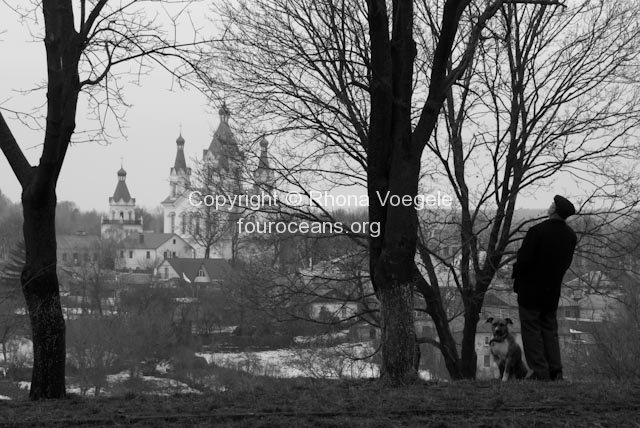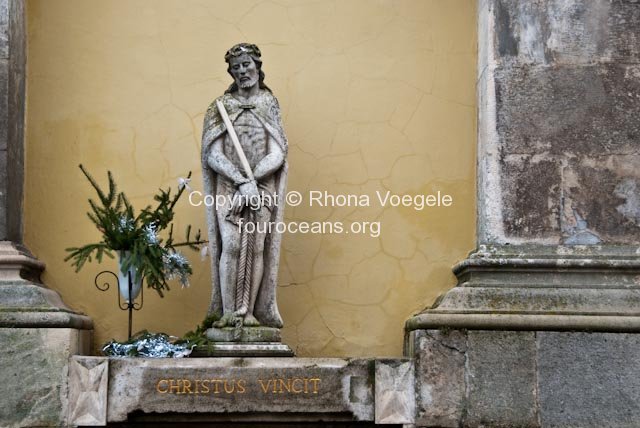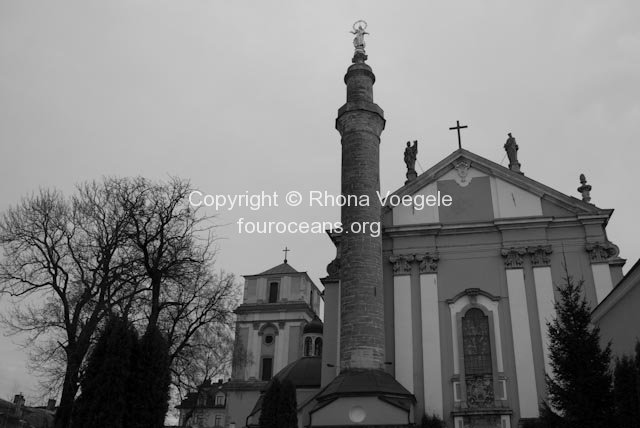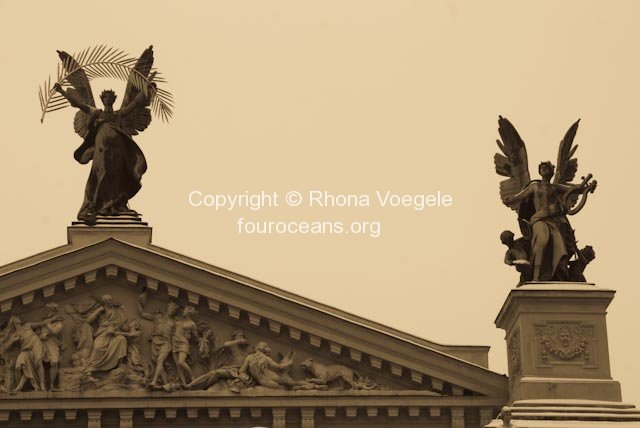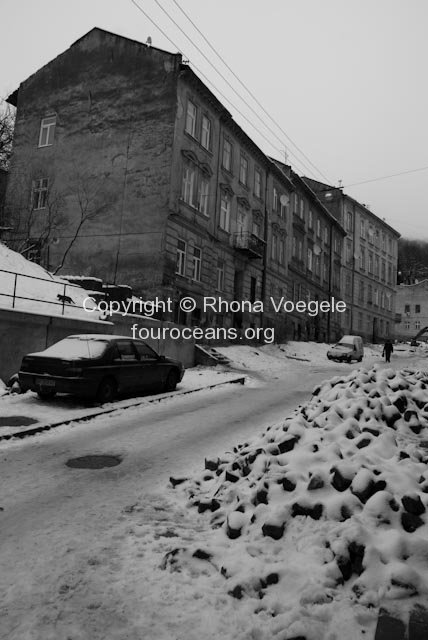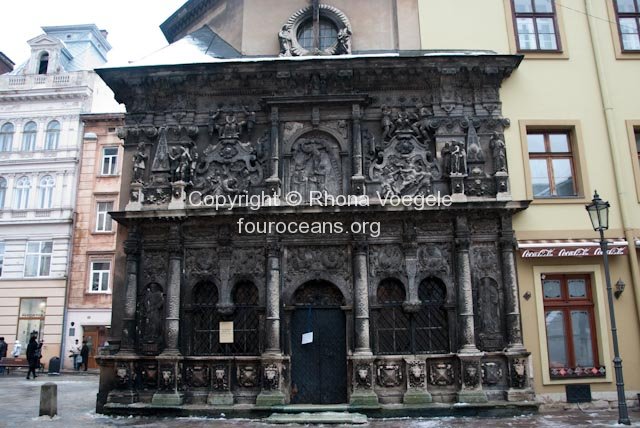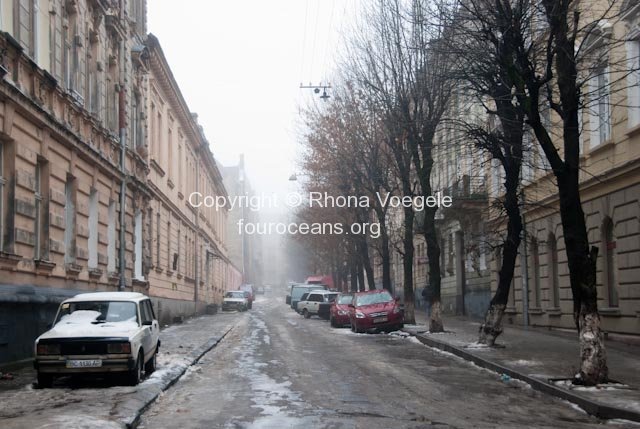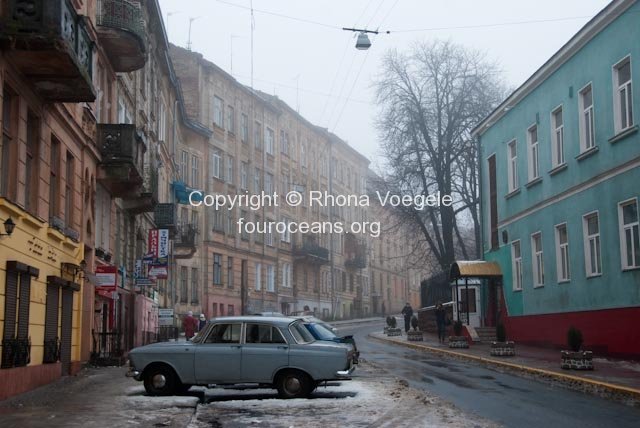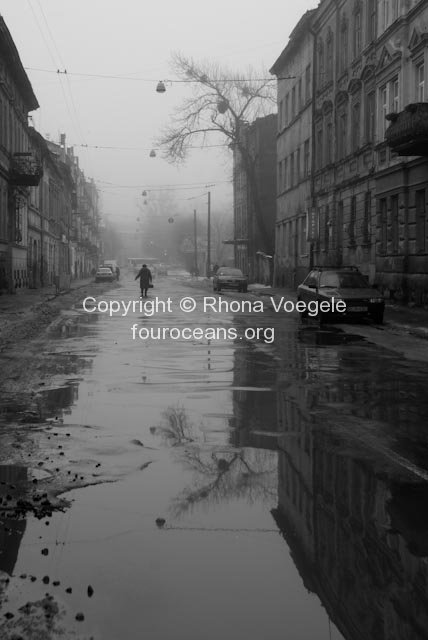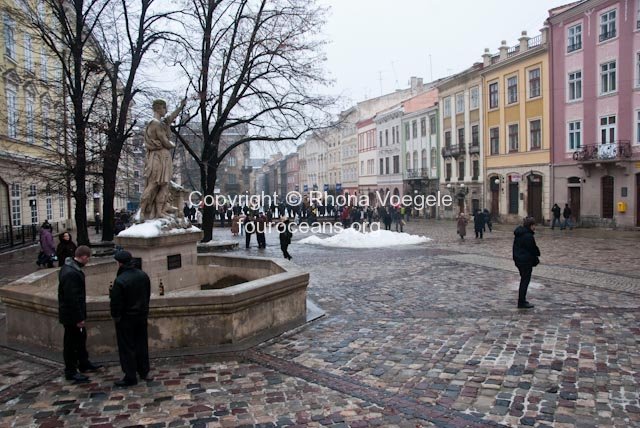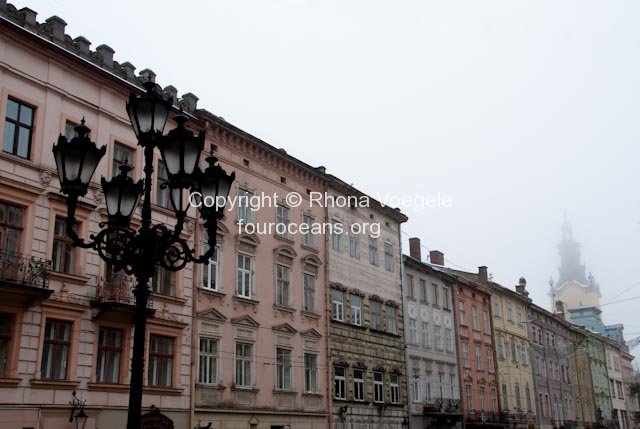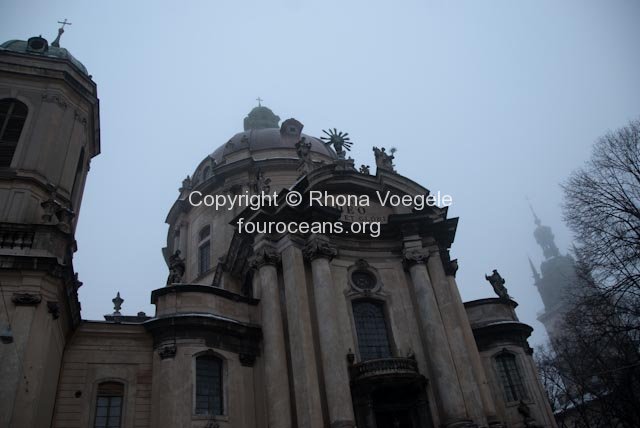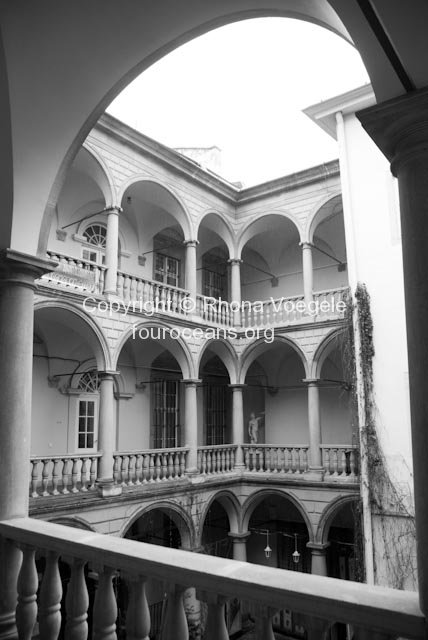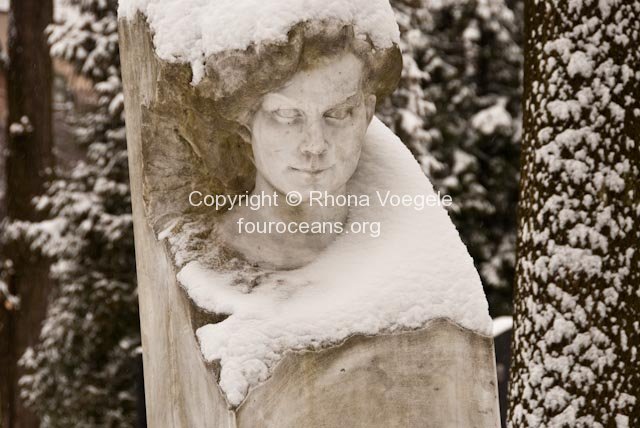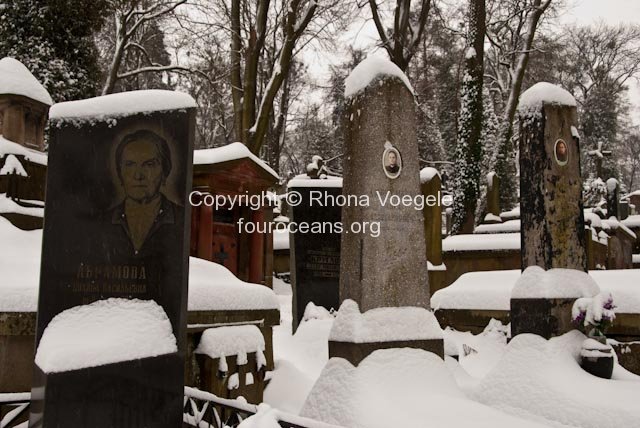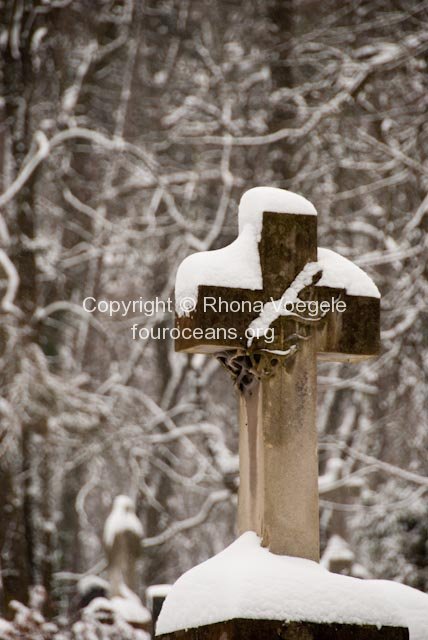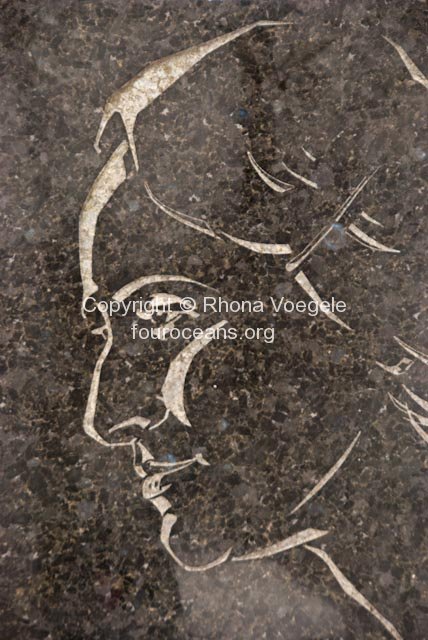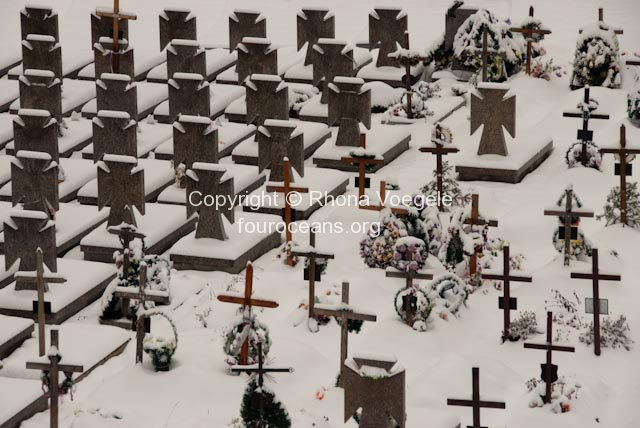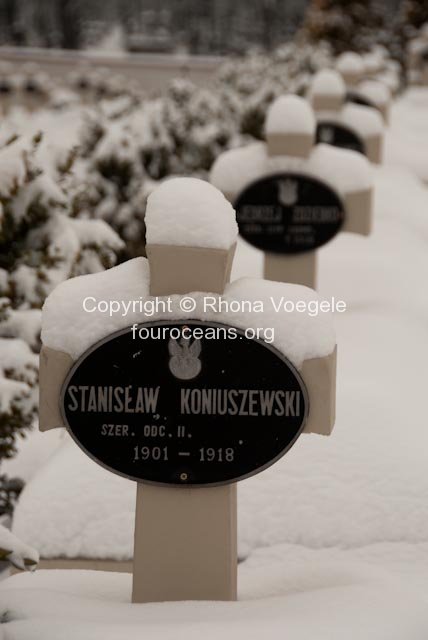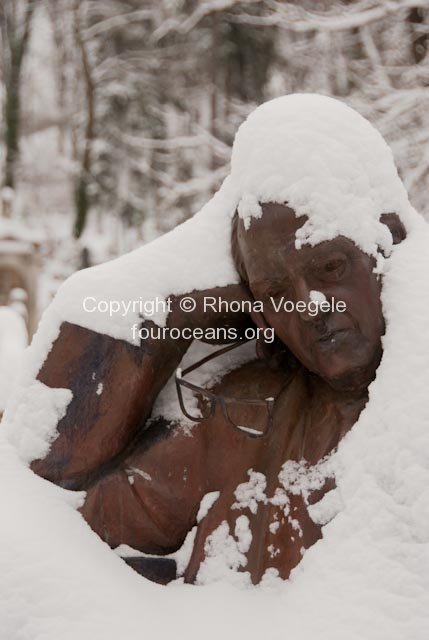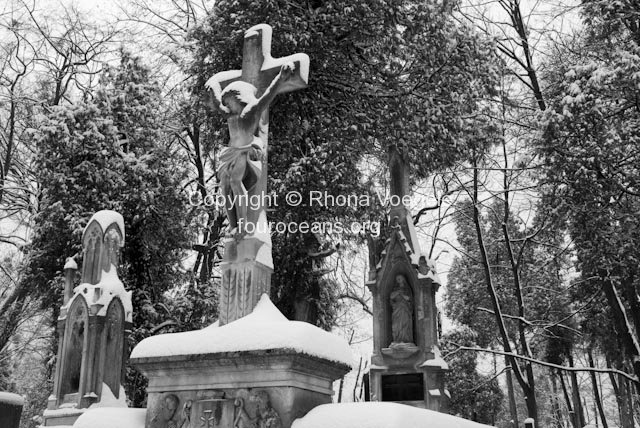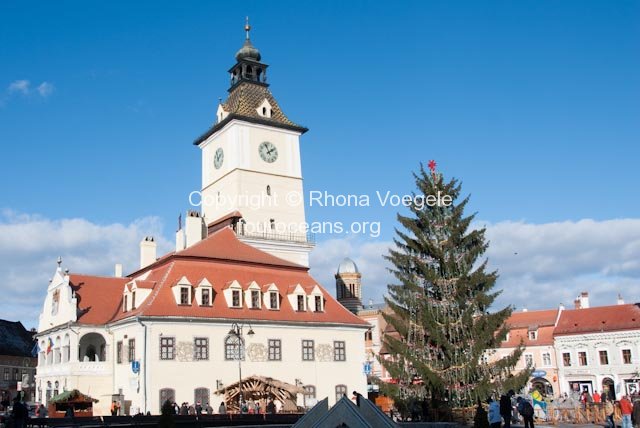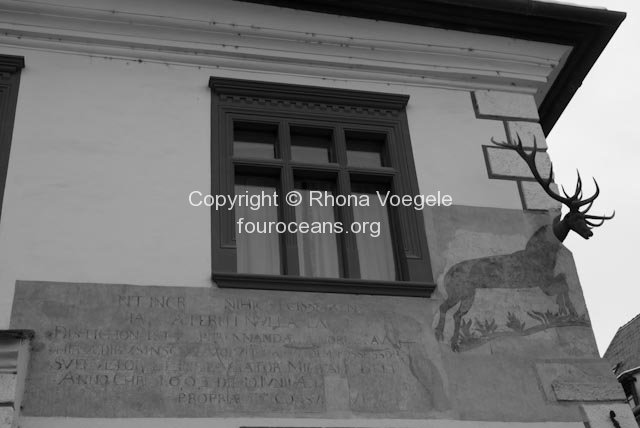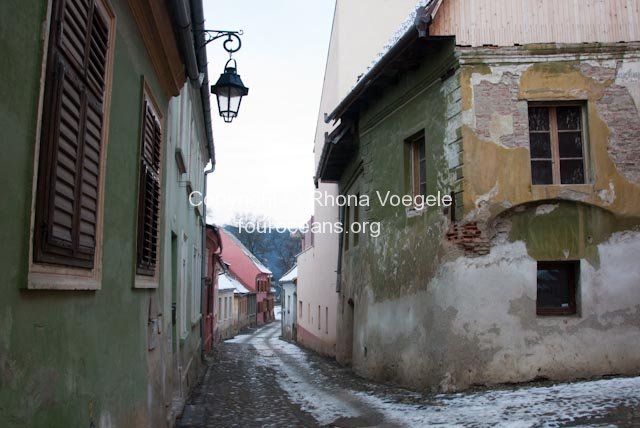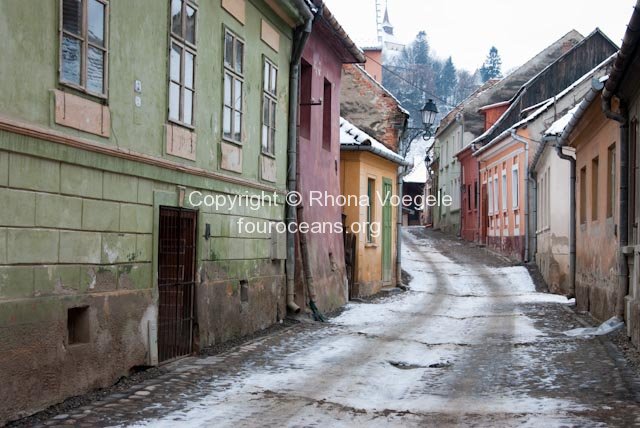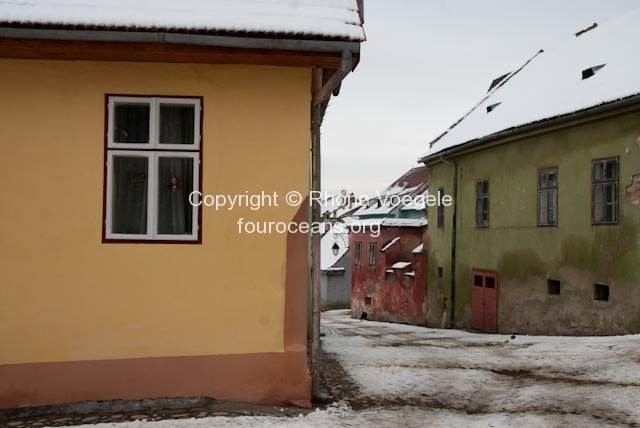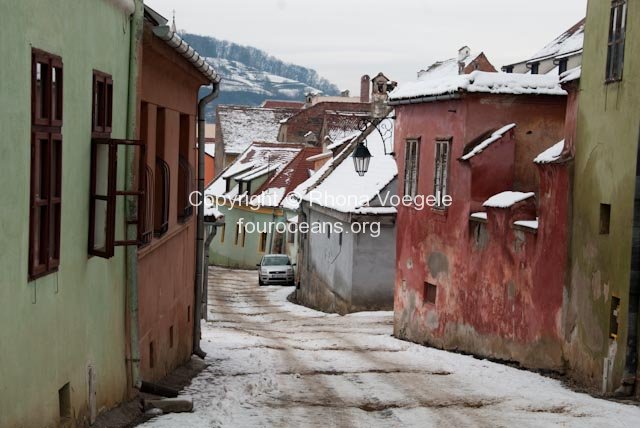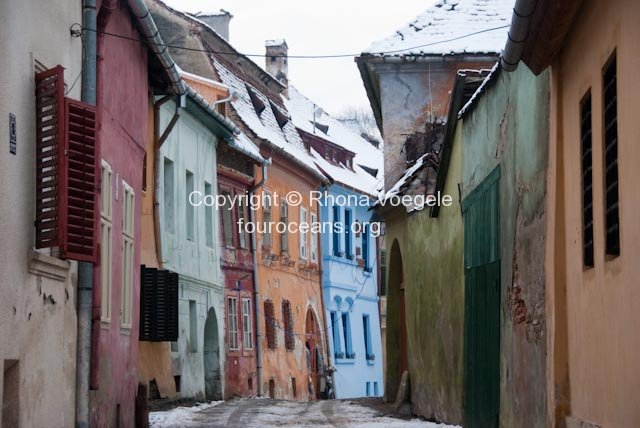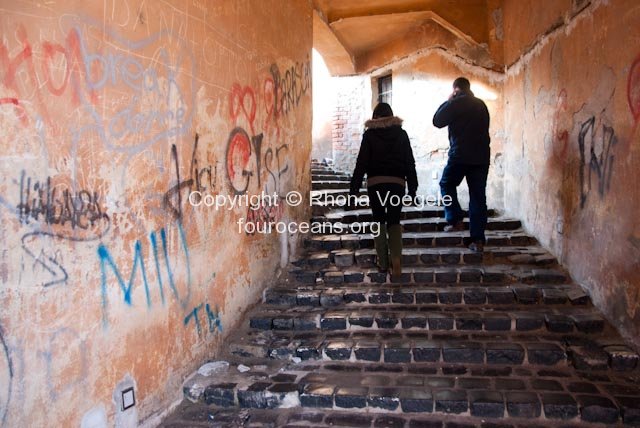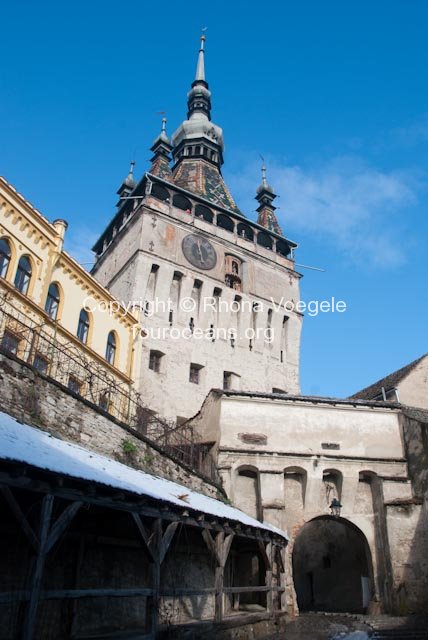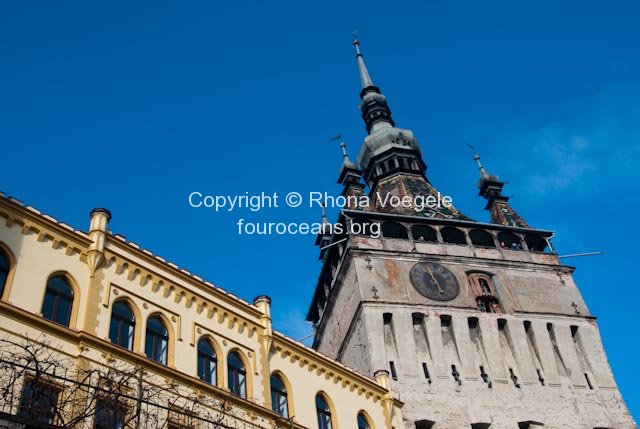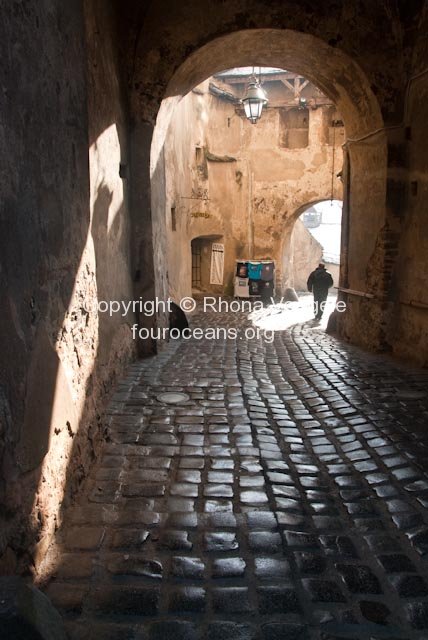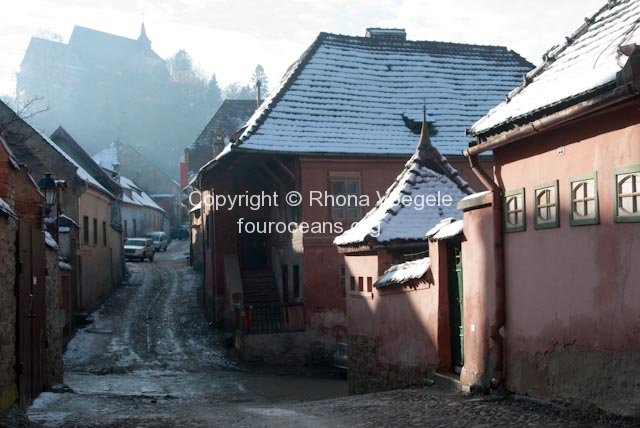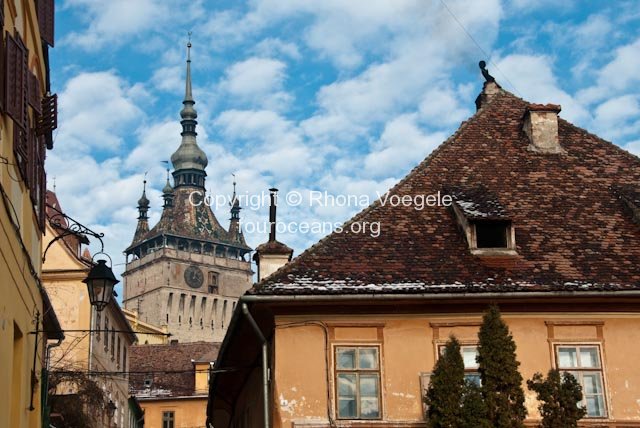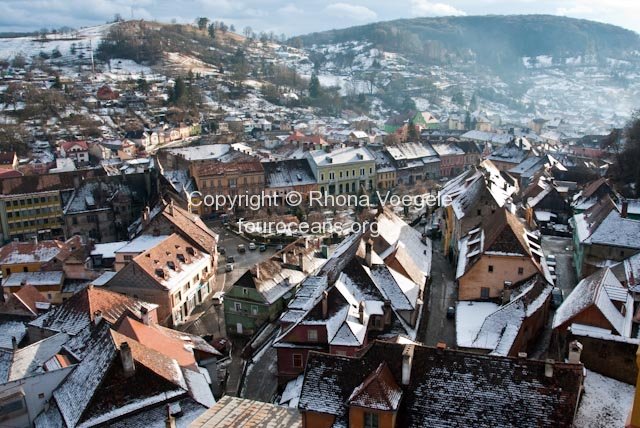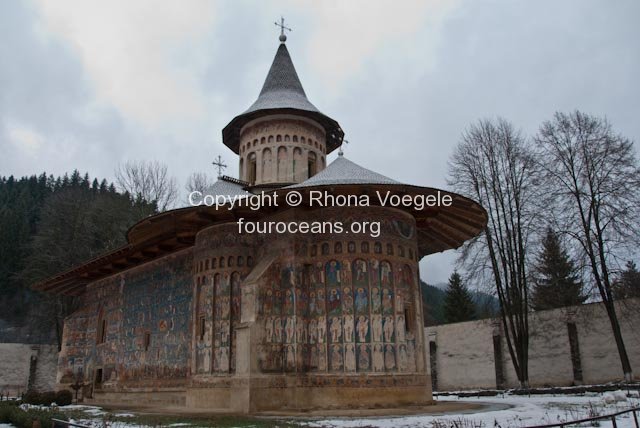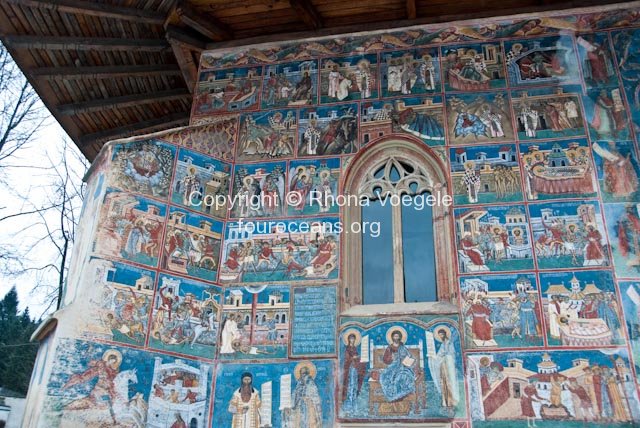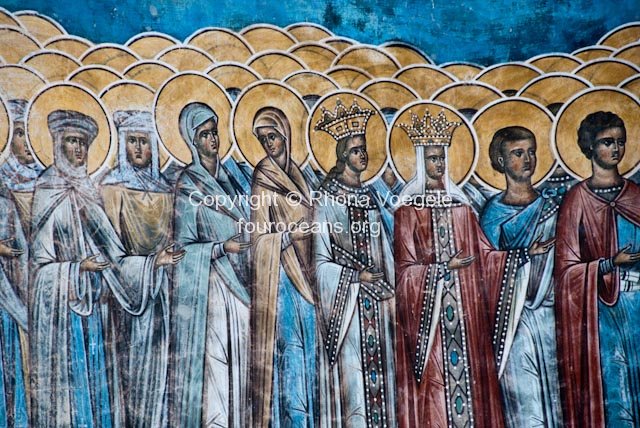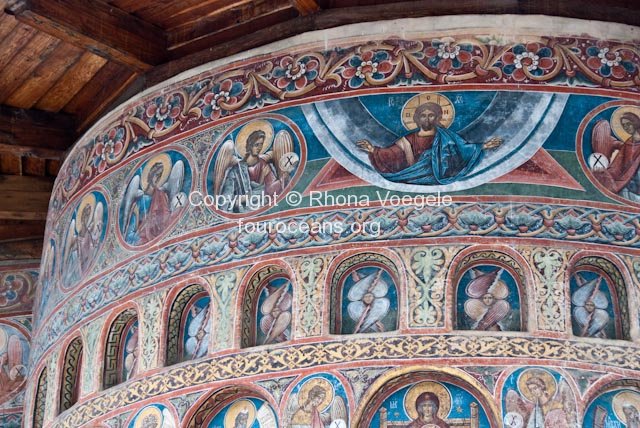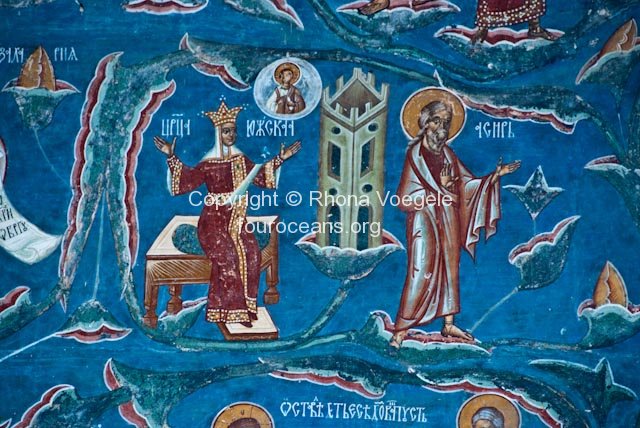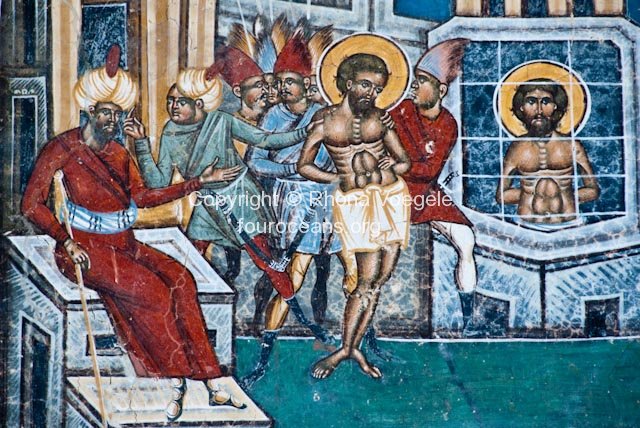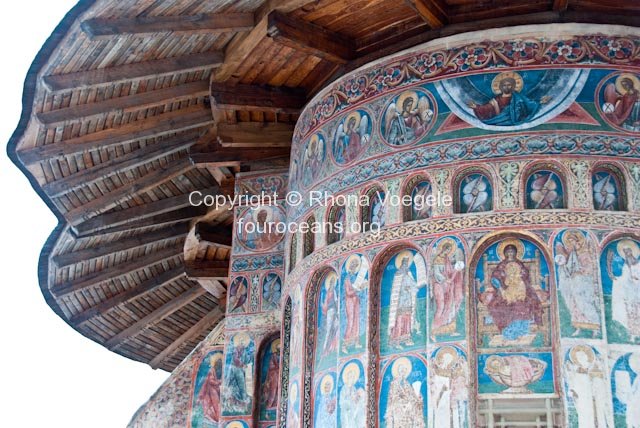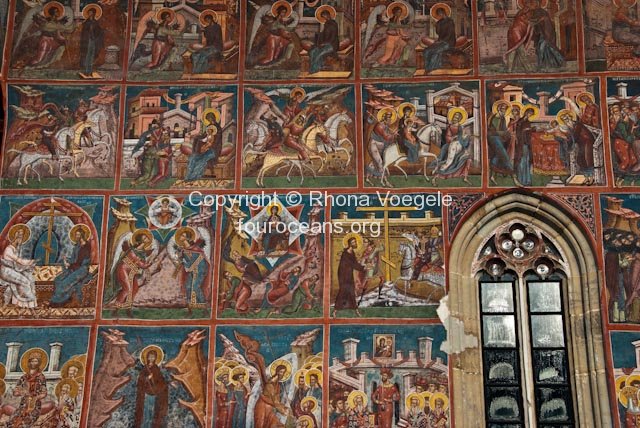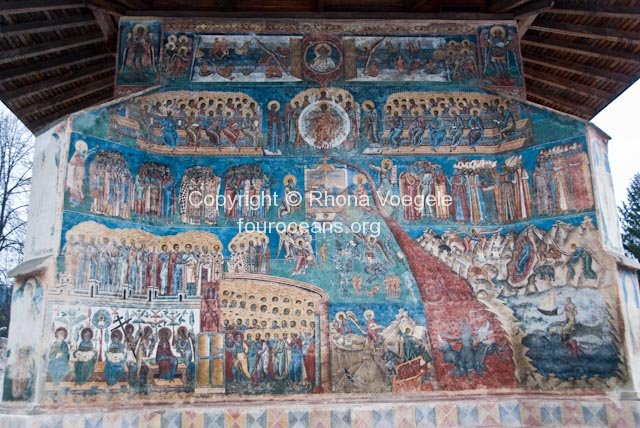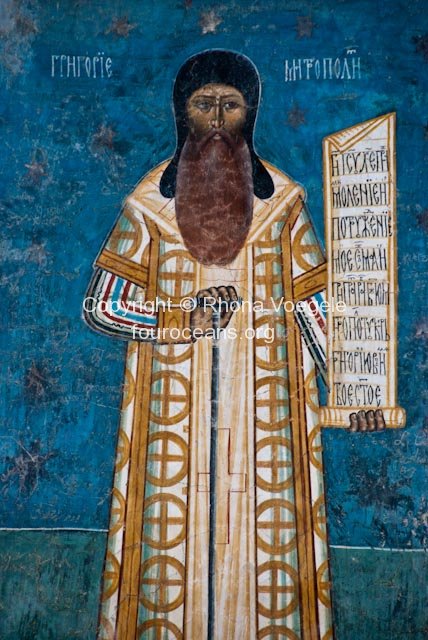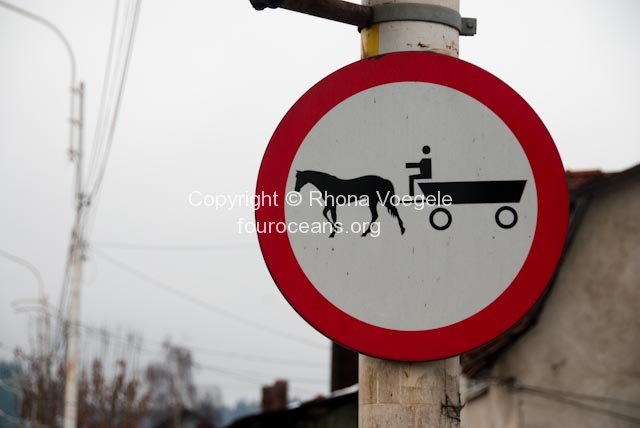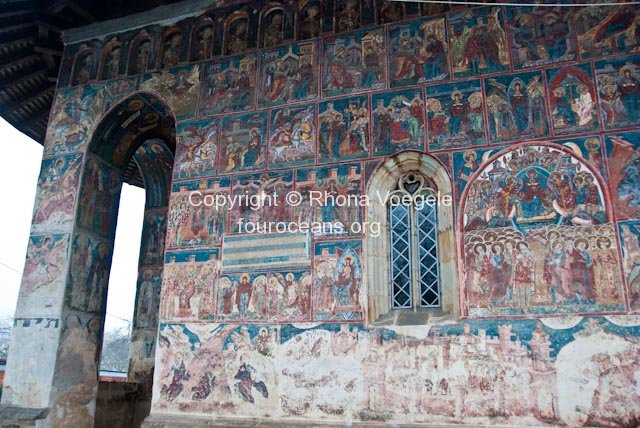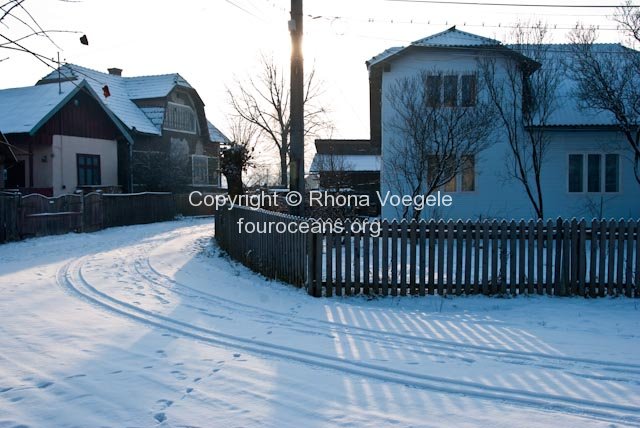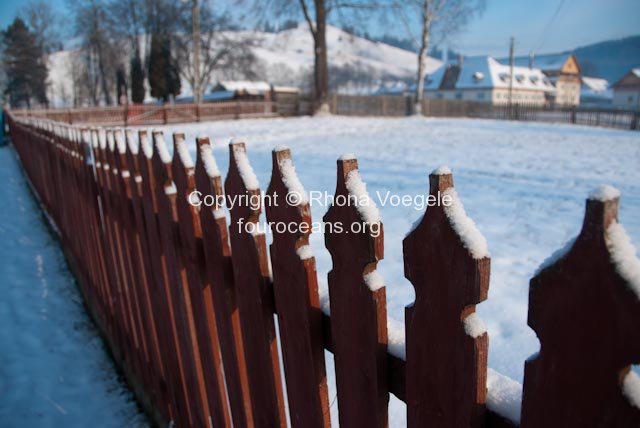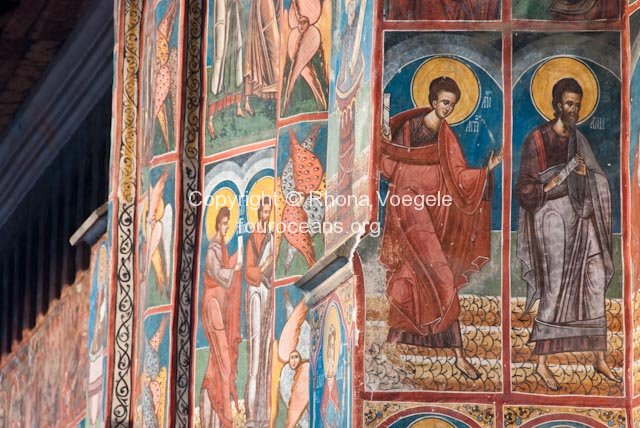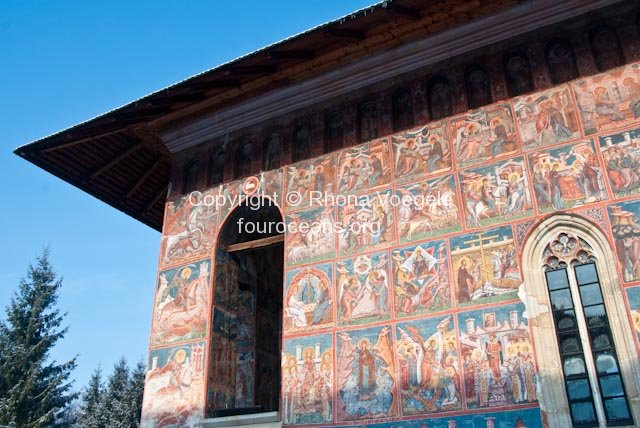–
–
Before we left Kyiv we had one major sight left to see: the Kyivo-Pechers’ka Lavra, a monastery complex that draws crowds of pilgrims and tourists. It was originally founded in 1051 by a Greek monk and his follower, who dug caves where they and other monks worshipped, studied and lived. Their mummies are still visible today, preserved by the cool dry air, and this is seen as proof that they were holy men. We visited the tunnels underground but weren’t allowed to see all of them as we weren’t pilgrims, to be fair all the mummies kind of looked the same to me. They were all covered with a shroud with only the odd hand or foot poking out. Up aboveground the monastery complex was huge, an incredible 28 hectares of churches, museums and other buildings. The massive Dormition Cathedral is a year 2000 reconstruction of the original which was blown up by either the Nazis or the Soviets (nobody is really sure).
One of the museums we went in to was the museum of micro miniatures which had exhibitions of such mind boggling smallness that it only took a single room to blow our minds and change our world view forever. Well maybe not quite that extreme but there was some seriously cool stuff, all viewed through a microscope. The pieces of art are the creation of a Russian artist, N Siadristy who does this stuff in his spare time. One of the pieces was a 2mm long strand of hair which had been hollowed out until it was almost transparent (?!). Not to stop at this he then created (by hand, this is all done by hand) a miniscule rose which he placed inside the hollowed out hair. Seriously! A chess board on the head of a pin was another creation and an intricate Egyptian scene complete with pyramids, a palm tree and a chariot all placed inside the eye of a needle. There were about 20 of these creations in an otherwise relatively non-descript room.
Read the rest of this entry »
Tags: Istanbul, Kyivo-Pechers’ka Lavra, micro miniatures, Odessa, winter
–
–
It’s been an interesting week and I’m going to start with what we did today even though it throws out the whole chronological order of things. We headed out to visit Chernobyl, site of the worst nuclear disaster in history, which released 400 times more fallout than the bombing of Hiroshima. Scary and foolish as that sounds the levels of radiation since the disaster on April 26, 1986 have dropped so much that visiting and working in the exclusion zone is now considered safe. There are around 4,000 people working within the 30km zone (doing 4 day to 2 week stints in the contaminated area followed by time outside). Many of them work at the Chernobyl Nuclear Power Plant. These days their main job is to transform the area into a safer place but I was surprised to find out that the plant was operational until December 2000.
At the time of the disaster there were four reactors functioning and two under construction, but now rectors five and six stand unfinished. To get in to the centre of the exclusion zone we had to pass two checkpoints and on the way out were tested for radiation, as was our car. The exclusion zone was initially circular but with later testing it has been changed to more accurately reflect contamination levels. The plume of radioactive fallout was initially blown westward but then winds changed northerly and it’s estimated that 60% of the contamination fell on Belarus. Nuclear rain fell as far away as Ireland.
Read the rest of this entry »
Tags: Chernobyl, Kiev, Kyiv, Lviv, Ukraine
–
–
Our first stop back in the Ukraine was Kamyanets Podilsky, home to an impressive fortress. The main part of the old town was built on what is almost an island in a sharp bend of the Smotrych River. It forms a natural moat fortified by high cliffs and the narrow strip of land connecting the old town to the “mainland” is guarded by the fort. It’s hard to imagine a better situated city but other than that I have to say that I was underwhelmed. The fortress was cool but we didn’t find much more to check out in the city. We did see a church that had been converted into a mosque during the Turkish rule in the 17th century. When the city was handed back to the Polish forces in 1699 a clause stated that the minaret that had been built could not be torn down. Not to be outwitted the Poles put a massive golden statue of the Virgin Mary on top instead.
From there we travelled to Lviv, a city that gets a lot of hype in the tourism in Ukraine literature. Maybe we’re just slow on the uptake or have hit that stage of travelling that we term “tourist tiredness”. It seems to happen about every month or so: we just get a bit bored, lazy and want to spend whole days doing nothing – especially avoiding sightseeing. Thankfully Lviv’s European bent means there are plenty of cafes designed for doing just that. We’ve had a latte at a café dedicated to the inventor of the kerosene lamp, eaten enough cake to make ourselves sick at a place called “the sweet shop” and sipped honey (and wasabi) vodka in a place designed like a Ukrainian Insurgent Army bunker. The UIA waged a guerrilla war for Ukrainian independence between 1943 and 1949, both against the Nazis and the Soviets. It was particularly popular in Western Ukraine and its lack of success (Ukraine didn’t gain independence from the USSR until 1990) doesn’t seem to matter to the patrons of the wildly popular restaurant. Before you’re allowed inside a guard opens a small window in the door and says “slava Ukraini” (glory to Ukraine) and you have to reply “geroyam slava” (glory to its heroes). The door is then opened and another guard, armed with a machine gun, hands you a shot of vodka. The secret door to the stairs leading down is hidden behind a bookshelf.
Read the rest of this entry »
Tags: Kamyanets Podilsky, Lviv, Lychakivskiy Cemetery, Ukraine
–
–
Our first stop after Brasov was Sighisoara. It’s another town founded by Germanic people, the Transylvanian Saxons, who were invited by the King of Hungary to protect the southern borders of what was then his land. They built their medieval citadel on a hill and it has been UNESCO listed for being “an outstanding example of a small fortified city” which has been inhabited since the 12th century. It was also where we celebrated New Years Eve 2009/2010. But before that happened we had a few days to explore the (inevitably) cobblestoned streets of the old town. It was beautiful.
The Clock Tower was once the main entry to the fortified city and home to the town council. It was built in 1280 with walls 2.35m thick and is now a history museum. Inside you can see the workings of the 1648 clock, a fantastic tangle of wheels, cogs, chains and spinning things all controlled by the steady tick tock of the pendulum swinging. Each day a different wooden figurine represents the day of the week and other figurines, carved from linden wood, represent characters from Greek and Roman mythology.
Nearby is a restaurant in the house where Vlad Tepes (inspiration for Count Dracula) was born, but we avoided it. Instead we opted for the delicious kurtos kalacs that were being sold in the main square. We first discovered kurtos kalacs in Brasov at the Christmas market next to the ice skating rink, and they’ve been a staple feature of any outdoor area that people wander around and might want to eat. Made from a thin ribbon of pastry wound around a thick wooden spit, they’re a hollow cylinder about 40cm long and 10cm wide which is slowly cooked over charcoal. The outside is crispy, covered with caramelised sugar and nuts, while the inside is still a little undercooked and mushy. Delicious!! Apparently they originate here in Transylvania but are now considered a Hungarian dish as this area was part of Hungary for hundreds of years. As you eat it the helix unwinds and we had an easy-to-eat street snack as we wandered.
Read the rest of this entry »
Tags: Humor, Moldavia, Moldovita, Sighisoara, Suceava, UNESCO, Voronet
